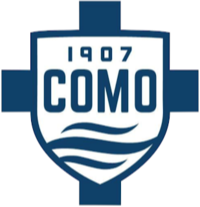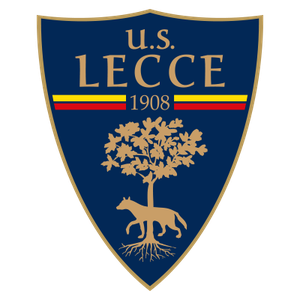 回到頂部
回到頂部
国产毛片又爽又大A片|
日韩精品无码熟人妻视频—本大道|
A级毛片大全免费|
男女又黄又刺激B片免费网站|
蜜臀国产一区二区三区无码A片|
国产www视频在线观看免费|
欧洲无线码免费一区|
夜夜狂射影院欧美极品|
A片粗大的内捧猛烈进出在线|
国产情侣愉拍360小视频|
91亚洲va在线va天堂va国|
日本午夜免费无码片三汲大片|
99精品久久久久久国产人妻|
国产无人区一码二码三码MBA
|
精品视频在线观看|
成人污污视频在线观看|
亚洲AV久久无码精品热九九|
久青草国产97香蕉在线视频|
真人女人无遮挡内谢免费视频%|
亚洲卡二卡三无线乱码新区|
无码精品蜜桃无套内谢的新婚少
|
午夜达达兔理论国产|
无人区一卡二卡四卡|
亚洲一级一级精品|
国产大片内射1区2区|
亚1州区2区3区4区产品国色天香|
欧美日韩国产高清视频二区|
久久国产精品伦子伦网爆社区
|
色欲久久精品AV无码|
麻豆一精品传媒媒短视频下载|
91精品国产自产在线观看福利|
国产欧美一区二区精品仙草咪|
96在线热播视频|
久久成人理伦电影A片|
99久久婷婷国产综合精品青草欧美成人|
国产极品美女视频福利|
国产精品久久毛片A片软件爽爽
|
www.亚洲天堂|
真实国内老女人的露脸视频|
日本亚洲欧洲免费旡码|
2019中文字幕久久精品|
神马影院电影888午夜理论不卡|
男女猛烈无遮掩国产精品一区
|
欧美人妻WWW无码国产黄漫|
国产大片内射1区2区|
免费看国产成人无码A片|
国产精品国产三级国AV在线观看|
欧美激情肉欲高潮无码鲁大师|
国产少又黄又爽的A片|
麻豆视传媒短免费网站|
av中文字幕潮喷人妻系列 |
色翁荡熄又大又硬又粗又视频|
丁香五月缴情在线|
日韩做A爰片久久毛片A片毛茸茸|
嫩草国产福利视频一区二区|
日本免费无码床戏视频|
A片好大好紧好爽视频|
国产激情无码激情A片免费软件|
我的初次内射欧美成人影视|
性XXXXX搡XXXXX搡景甜|
天堂在线观看国产精品|
成人无码区免费A片视频日本|
亚欧成人毛片一区二区三区四区|
国产又黄又潮娇喘视频在线观看|
亚洲精品综合五月久久小说|
美女乱子伦高潮在线观看完整片|
中文乱码一线二线三线|
欧美黄片一区二区|
成人性生交A片免费看|
国产成人aa在线观看视频|
91久久嫩草丁香婷婷色伊人|
HEYZO中文字幕无码|
99久久天美国产精品免费人妻|
国产少又黄又爽的A片|
91久久精品无码一区|
91色婷婷综合网最新资源发布
|
国产大爆乳大爆乳在线播放|
成人黄网站A片免费观看|
交1300合集欧美成人性|
国产精品人妻99一区二|
着衣爆乳揉みま痴汉电车中文字幕
|
亚洲精品无码色情AV在线观看|
国产网红女主播精品视频|
日韩色情无码免费A片|
少妇被躁爽到高潮无码人狍大战|
人妻久久久精品69系列A片蜜臀|
欧美老妇与zozoz0交|
日欧美黄片免费观看|
荫蒂每天被三个男人添动漫|
国产人妻人伦精品1国产|
内射干少妇亚洲69XXX|
OG日产精品一卡2卡三|
成人在免费视频手机观看网站|
亚洲中文字幕在线无码|
96在线热播视频|
国产福利资源网在线观看|
五月色丁香综合成人网|
亚洲AⅤ无码一区二区|
日韩做A爰片久久毛片A片|
亚洲99精品A片久久久久久|
日韩av无限在码|
欧美成人无码A区在线观看免费|
在厨房抱住岳丰满大屁股|
不卡av中文字幕手机看 |
一本到DVD不卡在线观看|
少妇被猛烈进出爽爽爽爽|
CHINA东北女人对话过瘾|
苍井空做爰高潮A片久久直播|
99久久99久久精品国产片果冻|
国产精品色欲AV亚洲懂色四季粉|
少妇挑战3个黑人惨叫4P国语|
一道本免费高清中字幕1V1|
国产精品久AAAAA片|
美女自慰网站免费观看
|
宝贝好紧好爽再搔一点试視頻|
97人人澡人人深人人添|
国产精品人妻系列21P|
无码精品人妻一区二区三区AP|
国产高清国内精品福利色噜噜|
日韩无码视频中文字幕|
乱码精品一卡二卡无卡|
熟岳大屁股疯狂迎合|
又黄又爽又无遮体的A片|
四个熟妇搡BBBB搡BBBB|
精品国产乱码久久久久久夜深人妻|
国语自产精彩视频在线视频|
91av视频在线观看|
青青公开啪啪视频|
秋霞无码AV久久久精品小说|
日本人妻A片成人免费看|
精品无码欧美黑人又粗又|
人妖又长又粗又大的巴|
日本毛片爽看免费视频|
亚洲午夜精品A片久久WWW解说|
99久久天美国产精品免费人妻|
色情无码永久免费网站WWW|
夜夜无码精品视频|
午夜神器18以下不能进|
麻豆视传媒短视频免费|
李采潭和黑人做在线看|
国产 日韩 中文字幕 制服|
亚洲国产精品无码成人A片小说|
av资源站国产一区二区三区|
国产精品久久久久久人妻精品A片|
99视频这里只有精品20|
成人一区在线观看|
欧美激情无码一区二区三区明星|
亚洲福利在线观看|
亚洲午夜久久久无码精品网红A片|
特黄特色大片免费播放器9|
国产成人午夜极速观看|
91插插影库永久免费|
嗯啊WW免费视频网站|
不卡精品国产夜色|
少妇对白半推半就高清AV|
2022年最新中文字幕|
欧美激情无码一区二区三区明星|
99re视频在线|
女人特级毛片一区二区|
亚洲AV成人噜噜无码网站A片|
全网男人的天堂网av|
亚洲精品久久久久77777|
2021年日产中文字乱码下载|
一本色道AV久久精品|
蜜月a 免费一区二区三区|
欧美搡BBBBB搡BBBBB|
婷婷亚洲天堂影院|
久久久这里有精品999|
很黄很色60分钟在线观看|
亚洲国产高清福利视频|
A片娇妻被交换粗又大又硬|
欧美成人无码A区在线观看免费|
一级a一级a爰片免费免免水l软件|
国产美女被爽到高潮免费A片|
双飞两个丰满少妇11P|
国产最新在线播放精品|
孩交乱子XXXX高清影视|
欧美粗黑巨大gay|
国产农村妇女毛片精品久久|
亚洲无码一区精品视频|
99久久无码一区人妻A片麻豆|
伊人大杳蕉中文在线看|
国产精品久久久久久久久齐齐|
欧美又粗又大又黄A片|
色欲AV亚洲永久无码精品麻豆|
亚洲美女又黄又爽在线观看|
国产色情高清电影视频|
日韩av不卡在线中文字幕|
小粉嫩精品A片在线视看|
亚洲精品AV一区午夜福利|
欧美激情肉欲高潮无码鲁大师
|
最近2019年中文字幕高清|
最近国语中文MV在线观看|
国产成人无码区免费内射一片色欲|
幻女FREE性ZOZO交黑人|
丁香五月香婷婷五月|
欧美日韩在线天堂|
天堂网在线新版WWW|
公么大龟弄得我好舒服A片视频|
亚洲精品入口一区二区乱麻豆精品|
国产第一页浮力影院草草影视|
日韩精品一卡2卡3卡4卡新区|
不卡久久精品国产亚洲av麻豆|
久久久无码A片观看免费|
亚洲精品久久久久77777|
sao虎影院桃红视频在线观看|
爽爽影院免费观看视频|
国产精品久久久久国产A级|
97人人爽人人澡人人妻|
亚洲精品国产SUV一区88|
男女做爰猛烈啪啪吃奶图片|
国产极品粉嫩福利姬萌白酱|
国产精品白浆一区二小说
|
桃子视频APP在线下载污
|
亚洲美女又黄又爽在线观看|
日韩一卡二卡3卡四卡2022精品|
亚洲精品一区二区成人|
国产手机在线视频|
人人妻人人澡人人dvd|
日本一道人妻无码一区视频|
亲子乱子XXXXXNN一棍抑|
一日本道伊人久久综合影
|
亚洲国产高清理论片|
国产精品亚洲蜜臀无码|
久久伊人五月丁香狠狠色|
99久久精品小逼国产毛片|
99热久久爱五月天婷婷|
国产真实伦在线播放|
无码免费毛片一区二区|
亚洲AV国产国产久青草|
最新国语对白超清偷拍|
92看片淫黄大片一级|
国产综合久久久777777
|
791国产亚洲精品视频第1页|
国产一区二区无码在线观看|
国产精品视频一区二区三区三级|
欧美又黑又大AAA毛片
|
亚洲精品一区中文字幕乱码|
国产熟女高潮一区二区三区|
无码人妻久久一区二区三区不卡|
成熟妇女A片高潮免费看|
欧美成人免费A片爽爽爽|
欧美一区二区在线观看|
99热久久是有精品首页|
AA片在线观看视频在线播放
|
亚洲AV无码国产乱码精品|
日欧美黄片免费观看|
国产91久久无码精品亚洲日韩|
三男一女囗交三A片视频|
国产男女猛烈无遮挡A片漫画|
亚洲中文字慕日产2021|
国产成人精品午夜福利在线播放|
国产人妻人伦精品无码麻豆|
99久久中文字幕伊人|
51国产黑色丝袜高跟鞋|
无遮挡拍拍拍免费观看|
国产脚交视频在线观看|
搡的我好爽视频在线观看|
国产精品日本不卡一区二区|
中文字幕丰满孑伦无码精品|
97人人妻人人添人人澡|
锕锕锕锕锕~好深啊app网站|
高清免费在线观看中文字幕av
|
正在播放囯产麻豆av|
成人国产一区二区精品小说|
一区二区三区四区国产精品|
国产精品18久久久久激情|
国产精品机视频大陆|
国产高清管线视频免费|
caoporn免费超碰在线|
无码精品一区二区三区免费久久|
试衣间和老师疯狂试爱|
中国男人和女人做人爱视频
|
亚州老熟女A片AV色欲小说|
亚洲中文 字幕 国产 综合|
2018国产成人在线 |
男人用嘴添女人免费视频A片|
麻豆国产一卡二卡三卡不卡|
精国产品一区二区三区A片|
被黑人猛烈30分钟视频|
五月色播先锋在线丁香|
欧美日韩精品无码免费看A片|
色综合99久久久无码国产精品|
国产精品久久久久久搜索|
成人午夜福利在线观看|
蜜桃AV色欲A片精品一区|
五月天婷婷开心婷婷四房|
老熟女重囗味HDXX69|
办公室扒开奶罩揉吮奶头A片久久|
国产做A爱免费视频在线观看|
丝袜诱惑久久久综合网|
久久日产一线二线三线SU|
综合色区亚洲熟妇另类 |
欧洲无码八A片人妻少妇|
天堂中文最新版www官网|
很黄的吸乳A片三女一男|
A片娇妻被交换粗又大又硬|
国产亚洲精品AA片在线下载|
99精品美女视频在线观看|
白丝班长被弄得娇喘不停在线观看|
欧美mv日韩mv国产|
国产色情高清电影视频|
午夜色情A片成人免费视频下载|
久久这里有精品视频任我鲁|
男人狂躁女人A片免费网站
|
亚洲精品久久久久77777|
AV国产剧情MD精品麻豆
|
2019中文字幕不卡在线视频|
日韩在线精品中文字幕一区二区|
内射后射亚洲国产巨乳|
欧美精品毛片久久久久久久|
熟妇乱子作爱视频大陆|
精品夜夜澡人妻无码AV蜜桃|
精品无码人妻一区二区三区色|
国产成人亚洲欧美一级在线|
2019中文字字幕在线网站|
女人高潮内射99精品|
人人摸人人操Α√|
亚洲卡一卡二新区无人区|
偷拍少妇做SPA高潮|
99久久人妻精品无码二区|
国产乱码1卡二卡3卡四卡5|
在线免播放器观看高清|
成人激情中文字幕一区二区|
強奷漂亮少妇高潮A片P夜夜嗨|
亚洲精品一区二区三区在线A片|
无码区国产区在线播放|
婷婷综合久久狠狠色成人网|
九九精品国产亚洲A片无码|
女领居夹得太紧好爽A片|
2019中文字幕乱码免费
|
CHINA东北女人对话过瘾|
日韩一区二区三区四区区区|
国产极品美女视频福利|
精品国产福利在线观看vr|
午夜性啪啪A片免费播放|
国产香蕉一区二区三区在线|
日韩在线欧美在线|
四川少妇ddd凸凸凸ddd|
国外亚洲成AV人片在线观看|
国产精品自产拍在线观看|
欧美激情无码一区二区三区明星|
成人性爱在线网站|
精品国产乱码一区二区|
双飞三个中年熟女69v视|
久久九九免费看少妇高潮A片|
精品无码国产一区二区三区av|
欧美人与性囗牲恔配视频|
日本少妇被爽到高潮无码|
无敌神马影院视频在线观看高清|
日本无码成人深夜无码苍井空|
四平青年电影完整版|
少妇人妻丰满做爰XXX|
大JI巴好深好爽又大又粗视频
|
人妻丰满久久伊人午夜av影院|
三级黃色男人的天堂|
四川少BBB搡BBB爽爽爽|
2019天天拍天天爱天天拍|
老湿机免费体检三分钟十八岁|
亚洲人妻一区二区三区|
小发廊妓女很紧在线播放|
成人做爰WWW网站视频|
999久久狠狠免费精品|
a级黄片视频免费看|
办公室爆乳女秘在线HD|
人妻饥渴偷公乱中文字幕|
亚洲AV国产国产久青草|
肉色欧美久久久久久久免费看|
精品国产精品无码A片久久妖精|
亚洲春色cameltoe一区|
97人人妻人人添人人澡|
国产乱码精品一区二区三|
亚洲AV爽爽香蕉久久影|
国产麻豆老师在线观看|
亚洲精品国产A久久久久久|
国产亚州精品无线视频|
人妻饥渴偷公乱中文字幕|
国产精品黄在线观看免费网站|
成人午夜三级视频|
国产国语高清在线视频二区|
欧美午夜福利视频|
成人做爰A片免费看视频|
国产精品无码一区二区在线欢捆绑|
意大利色情肉欲乐园|
成人免费a在线视频国产|
在线麻豆精东9制片厂AV影现网|
人与嘼在线A片观看免费|
99高清国产自产拍|
日日弄天天弄美女BBBB|
人与性口牲恔免费视频|
色情无码WWW视频无码区小黄鸭
|
最新亚洲精品成人|
欲妇荡岳丰满大乳无码久久久久|
国产黄色视频在线免费看|
6080yy日本中文字幕|
啊轻点灬大巴太粗太长了动态图|
午夜神器18以下不能进|
北条麻妃熟女人妻AV在线|
国产最爽的乱婬国语视频对白
|
a篇片在线观看网站|
一边搓奶一边摸下视频视频|
国产又黄又爽胸又大免费视频|
久久久久影院色老大2020|
亚洲成h人无码动漫无遮挡精品|
无码一区二区精品|
青青青国产在线观看免费|
免费观看成人毛片A片入口少|
高清国产摸出水在线视频|
91久久久人妻系列|
牛牛本精品99久久精品88m|
9久久伊人精品综合观看|
午夜福利体验试看120秒
|
91丝袜国产欧美|
国产日韩高清一区二区三区|
asian4you裸模|
曰韩无码?v一区二区免费
|
91麻豆精品国产91久久久久久久久
|
国产熟妇高潮呻吟喷水|
亚洲一区二区三区h无码|
国产呦av在播放|
五月婷婷在线人妻精品视频
|
91精品国产乱码 |
国产不卡分享不卡一区二区|
成人午夜福利院在线观看|
欧美乱妇欲仙欲死视频免费|
久久免费黄色一级视频|
日韩人妻无码精品A片免费不卡|
乳夹震动走绳play调教|
国产美女主播紫薇大秀|
百度WWW噜噜噜色COM|
我学生的妈妈双字ID5|
国产又粗又长又大A片激情|
国产寡妇色XXⅩ交肉视频美女|
日韩高清不卡精品免费在线播放|
国产精品正在播放|
国产99九九久久无码熟妇|
精品日韩二区三区精品视频
|
亚洲久热无码av无码中文字幕|
免费AV一区二区三区无码|
少妇的肉体AA片免费|
成人一区在线观看|
AV无码国产精品午夜A片|
亚洲色无码A片中文字幕|
午夜一区欧美二区高清三区|
高潮流白浆潮喷在线视频免费|
www.射.com|
a在线亚洲男人的天堂在线|
丰满级A片直播免费下载观看|
h片在线观看一区二区三区|
蜜桃AV蜜臀AV色欲AV麻|
2021年日产中文字乱码下载|
AV国产精品私拍在线观看|
亚洲一-卡2卡3卡乱码...|
男女猛烈无遮掩国产精品一区|
国产免费成人久久综合一区|
成人午夜AV亚洲精品无码网站|
最新手机看片视频一区|
国产AV夜夜欢一区二区三区|
扒开腿挺进岳湿润的花苞视频|
欧美人又长又大又粗无码视频|
91在线无码秘 入口在线|
国产美女裸露无遮挡双奶A片游戏|
成在人线av无码高潮喷水免费|
www久久久久久久久久|
日韩精品无码一区二区|
caoporn超碰发布页|
大香焦久视频在线播放|
免费无码毛片一区二区三区A片|
AV大片在线无码永久免费|
性一交一乱一美A片69|
无码乱肉视频免费大全合集|
麻豆短视频传媒APP免费下载|
欧美群伦性艳史黄94|
老爷咬住小嫩奶头高H|
亚洲AV在线无码播放毛片浪潮
|
国产精品高清视亚洲一区二区|
少妇挑战3个黑人惨叫4P国语
|
国产不卡在线波多野吉衣|
亚洲高清成人AV电影网站|
亚洲小说在线图片色|
精品国产精品人妻久久无码五月天|
性色AV爽歪歪啪啪A片|
少妇扒开粉嫩小泬视频|
色婷婷婷丁香亚洲|
最爽的亂倫A片中国国产|
亚洲AV在线无码播放毛片浪潮
|
丰满人妻翻云覆雨呻吟视频|
国内卡一卡二卡三免费网站|
成年人视频网站免费|
无人区码二码乱码区别在哪|
欧美激情无码成人A片|
狠狠躁夜夜躁青青草原软件|
美女自慰网站免费观看
|
国产又粗又深又猛又爽又黄A片|
成人做爰WWW网站视频|
色欲国产一区二区日韩欧美|
大乳奶一级婬片AAA片图片|
蜜臀AV夜夜澡人人爽人人|
清除唯美第一区二区三区|
99热在线精品免费一区|
亚洲欧洲卡1卡2新区入口|
2019中文字幕V片在线 |
水蜜桃一卡2卡3卡4卡|
五月天精品视频在线观看|
麻豆视传媒app官方|
国产人妻人伦精品无码麻豆|
国产色情18一20岁片A片下载|
免免费国产AAAAA片|
91在线视频观看无毒不卡|
日本吻胸视频成人A片无码|
自拍视频在线观看视频精品|
色吊丝永久性观看网站|
欧美精品色婷婷五月综合|
边啃奶边躁狠狠躁A片动图|
亚洲AV久久久噜噜噜熟女软件|
人妻AV无码一区二区三区蜜臀|
精品久久亚洲高清不卡|
japanese大战黑人|
8050成人黄色视频|
av免费在线观看网站|
红桃视频一区二区无码免费|
国产真实乱xxxav|
亚洲日本欧美日韩中文字幕|
骚狐视频在线观看|
成人无码高潮AV在线观看|
牲囗与女人性佼播放片|
丰满人妻被公侵犯久久久久|
亚洲精品午夜一区人人爽|
着衣爆乳揉みま痴汉电车中文字幕|
国产午夜精华精华精华|
日本大片免a费观看视频|
亚洲性爱先锋影音|
丁香五月中文字幕|
久久精品视频15人人爱在线直播|
国产精品成人va在线观看|
91尤物视频盛宴|
亚欧成人毛片一区二区三区四区
|
中文字幕一区二区三A片|
狂野欧美性猛伦XXXX|
成全动漫视频在线观看免费高清版下载|
国产精品视频一区二区三区三级|
老妇高潮潮喷到猛进猛出|
91久久无码一区人妻A片蜜桃|
国产精品国产三级国AV在线观看|
日本猛少妇色XXXXX猛叫|
最近中文字幕完整国语版|
午夜不卡片免费视频|
国产九九九九九九九A片|
www.亚洲天堂|
成人午夜爽A片免费视频|
亚洲熟女乱色综合一区小说|
阿娇被躁120分钟视频|
免播放器无码av网址|
欧美 亚洲 另类 综合网|
小粉嫩精品A片在线视看|
乌克兰A级艳片色情欲2|
未满十八禁止看床片视频|
国产精品国产三级国产AⅤ中文|
国产精品白丝jk喷白浆软件
|
亚洲中文字幕在线第六区|
人妻激情偷乱一区二区三区|
精品久久久久久无码人妻热黄鳝门
|
无码乱肉视频免费大全合集|
久久久无码精品亚洲幕密乳AV|
国产色情18一20岁片A片下载|
免费看黄在线观看网站|
免费A片线观看成人在-杏TV|
日韩视频www色情|
尤物一区二区三区在线观看|
五年沉淀只做精品ios|
麻豆啊传媒app官网下载免费|
亚洲国产97久久精品无色码|
亚洲色一色噜一噜噜噜|
成人精品一区日本无码网站|
成人国产精品秘片多多|
日本一本道在线一二区|
日韩无码视频一区二区三区|
熟女毛毛多熟妇人妻AV|
国产亚洲综合一区二区A片吴施蒙|
国产亚洲午夜一区二区三区|
精品老牛一卡2卡3卡4卡新版|
伊人久久丁香色婷婷啪啪|
jk黑色丝袜美腿老师啪啪|
av资源站国产一区二区三区
|
国产玉足榨精视频在线观看|
ASIAN大陆明星裸休合成PICS
|
国精产品蘑菇一区一区有限|
麻豆短视频app官方|
久艾草国产成人综合在线视频|
啊灬啊灬高潮来了视频直播A片|
男人自慰一级看片免费观看|
台湾佬娱乐11kkhh|
老湿机免费体检三分钟十八岁|
免费无码婬片AAAA片小说直播|
XX性欧美肥妇精品久久久久|
伊伊人成亚洲综合人网|
国模羊羊大尺度私拍|
偷窥国产亚洲免费视频|
中文字幕黄色av首页网站|
高清国产无码乱伦|
97丨九色丨国产人妻熟女|
免费无码AV色情在线|
欧美精品色婷婷五月综合|
亚洲午夜精品A片久久W|
午夜影院福利合集1000|
亚洲AV无码乱码国产精品桃色|
欧美日韩一区二区三区自拍|
精品亚洲A∨无码国产一品在线
|
国产精品亚洲精品久久挡不住|
毛片少妇爽到高潮特黄A片|
五月婷婷在线人妻精品视频
|
久久久国产精品免费看|
黄色一级电影久久|
交1300合集欧美成人性
|
亚洲最大最新成人网站|
成人WWW色情在线观看|
大伊香蕉精品一线视频|
无码高潮又爽又黄A片|
两老头把我添高潮了A片苏晴|
国产JK白丝喷白浆精品视频|
亚洲色无码A片一区二区潘甜甜|
国产乱子伦免费视频在线更新|
日产无码AV在线观看|
欧美午夜理伦三级在线观看|
亚洲精品久久无码老熟妇|
国产偷抇久久精品A片69
|
国产人妻人伦精品1国产丝袜|
国产亚洲综合一区柠檬导航|
无码乱肉视频免费大全合集
|
91精品高清91久久久久久|
午夜91精品国产人妻AⅤ麻|
国产又猛又粗又爽的视频A片|
孩交乱子XXXX高清影视|
97任你碰任你摸任你爽|
国语激情对白 VIDEOS|
五月开心六月伊人色婷婷|
95国产精品人妻无码久|
免费鲁丝无码下属一级|
岛国无码高清99|
成人性三级欧美在线观看|
久久精品国产一区二区三区四区|
国产午夜手机精彩视频|
五月色播先锋在线丁香|
亚洲AV成人噜噜无码网站A片|
漂亮的保姆5韩国电影中字|
无码人妻国产一区二区三区|
成人WWW色情在线观看|
国产日韩精品在线观看|
丰满人妻无码AV一区二区免费|
国产精品无码人妻系列AV|
大伊香蕉精品一线视频|
免费一级a毛一级a看免费视频下载|
91popn在线国产|
最近2019手机中文字幕下载|
日本国产高清视频在线观看|
高清国产无码乱伦|
欧美人妻精品一区二区三区|
99麻豆久久久国产精品免费|
午夜不卡av免费|
91精品一区二区精品国产|
女人天堂av性爱亚洲性爱|
2021年日产中文字乱码下载|
国产美女主播紫薇大秀|
91午夜无码鲁丝片久婷99精品华液|
爽爽影院免费观看视频|
国产农村熟妇出轨VIDEOS|
亚洲AV国产精品无码A片|
av免费在线观看网站|
ijzzij18免费观看18视频|
秋霞无码AV久久久精品小说|
国产精品久久久久无码AV色戒|
国产香蕉一区二区三区在线
|
亚州AV无吗东京热|
国产末成年女噜噜片|
国产色拍拍视频在线|
成人女人爽到高潮的A片羞羞动漫
97精品伊人久久大香线蕉
|
国产亚洲精品久久久久5区|
91最新精品国自产拍福利 |
国产av日韩一区二区三区精品|
国产真实露脸多p视频|
免费无码国产色情在线APP|
精品日韩二区三区精品视频
|
狠狠CAO日日穞夜夜穞AV|
日本无码毛片久久久九色综合|
少妇扒开粉嫩小泬视频|
三级成年网站在线观看|
国产1988精品A片|
北岛玲精品一区二区三|
日本A片中文字幕精华液|
日本无码成人A片免费播放|
成人麻豆日韩在无码视频|
又黄又爽又色的免费网站|
激情区小说区偷拍区图片区|
色欲久久精品AV无码|
性夜影院午夜看片|
欧美日韩一区二区三区自拍|
深田咏美不戴胸罩邻居在线|
百度WWW噜噜噜色COM|
欧美人又长又大又粗无码视频一区|
日本不卡码在线网站|
成人无码高潮AV在线观看|
最新最热中文字幕在线观看|
又黄又爽又猛1000部A片|
翁公的粗大挺进我的密道|
Free HD XXXX DH 69|
日产无码AV在线观看|
春药按摩人妻中文字幕|
大香蕉在线综合在线观看|
麻豆精品传媒卡一卡二传媒短视频|
国产高清在线观看自拍|
少妇饥渴偷公乱AV在线观看涩爱
|
男人大JI巴做爰好爽视频|
爽爽影院免费观看视频|
欧美成人精品三区综合A片|
国产又色又爽无遮挡免费|
综合色区亚洲熟妇另类 |
18禁播放器安全吗|
一本久道久久综合狠狠躁AV|
久久日本片精品AAAAA国产|
亚洲 欧美 日本 国产 高清
|
成年人视频网站免费|
99久久久国产精品免费蜜臀|
无人区一码二码乱码的区别|
真人做爰48姿势视图片|
欧美综合在线网不卡|
红桃TV.欧美国产|
欧洲性xxxx免费视频下载软件|
欧美成人精品三区综合A片|
内射后入蘑菇视频ONLYYOU|
久久最新热视频精品店|
狠狠色很很鲁在线视频|
群啪NP纯肉性校园运动会|
少妇被多人C夜夜爽爽|
国产精品三级女人国产香蕉|
成人无码A片一区二区三区免|
精品国产不卡一区二区三区|
2017高清无码电影天堂|
女人天堂av性爱亚洲性爱|
高清乱码一卡二卡插曲A|
国产日韩免费无码一区二区|
欧美顶级黃色大片免费|
久成人久久久亚洲精品网|
色翁荡熄又大又硬又粗又视频软件|
麻豆传煤一区免费入站口|
久久国产露脸老熟女熟69|
亚洲区中文字幕在线不卡电影
|
中文人妻熟女波多野结衣|
A片娇妻被交换粗又大又硬|
国产69熟妇视频天美|
欧美亚洲日韩另类|
国产精品乱码久久久久久软件|
久久精品国产一区二区三区四区|
亚洲v天堂v手机在线|
天天躁日日躁狠狠躁AV|
亚洲 国产专区 校园 欧美|
国产精品1区2区|
91人妻人人澡人人爽人人精品投稿|
国产人妻人伦精品婷婷|
A片色情内射无码久久|
日韩高清特级特黄毛片
|
日欧美黄片免费观看|
粉嫩merna人体丰满欣欣赏|
国产a∨作爱视频|
****亚洲精品无码网站老牛|
两性午夜刺激爽爽视频|
国产精品久久丫毛片A片软件|
亚洲爽妇网欧美亚洲欧美|
中国黄页网站大全免|
欧美亚洲精品真实在线|
亚洲天堂一区二区三区|
超级熟女人妻在线视频|
公与媳中字HD中字日本|
动漫精品中文无码卡通动漫|
国产亚州精品无线视频|
激情内射亚州一区二区三区爱妻
|
欧美在线欧美在线|
免费观看自慰喷水www久久久|
亚洲欧美韩国综合色|
国产玉足榨精视频在线观看|
老牛嫩草一二三产品区在线|
亚洲国产成人A片乱码|
亚洲精品深夜AV无码一区二区|
日本A级C片免费看三区|
十八男男在线观看视频|
少妇被狂躁爽一区二区|
videoxxoo欧美老师|
欧美午夜理伦三级在线观看|
吉沢明歩中文字幕在线看|
国产熟妇的荡欲午夜视频|
色欲AV亚洲A片永久无码精品|
国产人A片777777久久|
av一级二级三级在线免费观看|
两老头把我添高潮了A片苏晴|
把腿张开我要cao死你男男
|
色翁荡熄又大又硬又粗又视频软件
|
精产国品一二三产区M553|
yourporn久久国产精品|
2021cao社区榴地址一地址二|
avtt天堂网Av无码|
人妻无码AV中文系列|
久久超碰97中文字幕|
A片在线观看免费无码播放|
jk黑色丝袜美腿老师啪啪|
国产精品久久久久久人妻精品A片|
无码人妻丰满熟妇精品区东京直播
|
欧洲性xxxx免费视频下载软件|
日韩色情无码免费A片|
久久久久国产精品www|
无码中文字幕热热久久|
2022国产日产欧产精品|
综合色区亚洲熟妇另类 |
婷婷开心色四房播播|
无码人妻一区二区三区A片|
WWWW亚洲熟妇久久久久
|
成人综合色在线一区小说 |
欧美激情无码成人A片|
97人妻超在线观看免费
|
国产免费一区二区在线A片|
粉嫩av一区二区白浆|
中文字幕三级片久久久|
欧美疯狂做爰XXXX高潮|
欧美熟妇乱人伦A片免费高清|
人妻无码精品一区二区|
国产无套内射又大又猛又粗又爽|
国产麻豆老师在线观看|
韩国青草视频19禁福利|
高清久久中精品中文字幕|
日韩做A爰片久久毛片A片|
双飞三个中年熟女69v视|
中文字幕无线码中文字幕下载|
激情区小说区偷拍区图片区|
日本道免费精品一区二区|
波多野吉不卡中文AV无码AV
|
久久人妻系列精品无码专区|
国内精品乱码卡一卡2卡三卡新区|
狠狠躁日日躁夜夜躁A片男男|
精品人妻倫九區久久AAA片69|
女人下边被添全过视频的网址
|
JAPANESE国产成熟|
国产成人vr视频精品一区 |
在线成人精品国产区免费|
好看AV中文字幕在线观看|
国产成人无码一区AV在线观看|
在线看dvd一本道|
日本老妇一级特黄aa大片|
欧美人做人爱A全程免费|
放荡少妇做爰中文字幕在线
|
猫咪av最新永久网址无码|
欧洲5卡6卡7卡老狼在线|
国内精品久久久久久久试看|
99精品产国品一二三产区|
国产人妻一区二区三区色戒乐|
精品欧洲av无码一区二区三区14|
91最新精品国自产拍福利 |
中国一级特黄特色 毛片|
国产欧美一区二区三区免费|
亚洲在线中文字幕2|
成人免费永久在线观看视频|
99高清国产自产拍|
国产人妻人伦精品1国产盗摄|
国产91精品露脸国语对白|
亚洲精品一区二区成人精品网站|
成人免费一区二区三区视频软件 |
OG日产精品一卡2卡三|
日韩精品人妻久久无码|
中文字字幕在线中文乱码不卡新二|
国产精品久久久精品三级|
98久久国产视频|
大交成年视频无码|
思思99热久久精品在线6|
国产精品成人va在线观看网|
少妇被又大又粗又爽毛片久久黑人|
东京热无码免费A片免费下载|
国产黄在线观看免费观看不卡
|
国产激情无码激情A片免费软件|
www.亚洲天堂|
国产精品麻豆A片必属品
|
日本道二区精品人妻久久|
夜夜狂射影院欧美极品|
美女扣粉嫩小逼自慰出水网站上|
亚洲五月综合网色九月色|
成人MV射精无打码视频|
日日天干夜夜狠狠爱|
99国内揄拍国内精品人妻免费|
国产又色又爽又刺激的A片|
日本国产高清视频在线观看|
中文字幕无线观看高清|
高清人妻一区二区|
午夜福利体验试看120秒|
又色又爽的成人免费视频|
久久精品人人妻人人澡人人爽|
99精品国自产在线偷拍无码软件|
国产麻豆天美果冻无码视频|
波多野结衣在线观看一区二区三区|
日韩在线看片免费观看软件|
噼里啪啦免费高清看|
夜夜爽日日澡人人添|
狠狠躁日日躁夜夜躁A片小说按摩
国产精品久久久久无码人妻精品
国产1988精品A片
|
人与嘼在线A片观看免费|
国产又粗又硬又大爽黄老大爷|
国产成人无码区免费内射一片色欲
|
五月丁香激色婷五月天|
国产精品久久久久无码人妻精品|
国产无遮无挡120秒|
国偷自产aV一区二区三区
|
久久精品男人的天堂a∨成人一区不卡|
秘亚洲国产精品成人网站|
最新国产精品久久精品|
AA片免费观看视频中国|
李采潭和黑人做在线看|
欧美巨乳大码试穿视频|
成人在无码AV在线观看一|
午夜影院福利合集1000|
国产精品丁香婷婷在线观看综合
|
四川寡妇高潮AAA片毛片|
国产在线拍国产拍拍偷|
精品人妻久久久久一区二区三区|
欧美槡BBBBB槡BBBBB|
国产成人AV激情在线播放|
999久久狠狠免费精品|
国产片āv国语在线观看手机版|
日韩欧美猛交XXXXX无码|
成人麻豆日韩在无码视频|
亚洲精品一区二三区不卡|
欧美性生交BBBXXXXX无码|
影视AV久久久噜噜噜噜噜三级|
国产精品久AAAAA片|
男人女人真曰的视频|
天堂在线观看国产精品|
国产精品丁香婷婷在线观看综合|
欧美午夜福利视频|
精品国产人成亚洲区|
在线播放国产一区二区三区|
亚洲精品AV无码重口另类|
成人午夜精品網站在線觀看|
丰满少妇大力进入AV亚洲|
男男H高潮嗯啊娇喘抽搐A片小说|
精品视频在线观看|
99久久无码一区人妻A片麻豆|
亚洲AV国产精品无码精|
麻豆啊传媒app官网下载免费|
放荡少妇做爰中文字幕在线|
国产麻豆天美果冻无码视频
|
色欲AV亚洲永久无码精品麻豆|
天堂网在线新版WWW|
欧美人又长又大又粗无码视频一区|
被黑人伦流澡到高潮HN小说|
国产精品乱码久久久久软件
|
亚洲在线中文字幕2|
A片试看120分钟做受图片|
国产97精品久久久天天A片|
成人电线在线播放无码|
国产清纯美女爆白浆视频|
51亚洲宅男天堂在线观看|
久草在线在线精品观看99|
女领居夹得太紧好爽A片|
97在线观看在线观看|
卡一卡二卡三专区免费|
国产麻豆精品人妻无码A片|
国产精品人妻无码免费久久久
|
999精品国产人妻无码系列久久|
国产精品人妻一码二码|
WWWW亚洲熟妇久久久久|
亚洲熟女乱色综合亚洲av|
苍井空一级A片免费播放|
末成年毛片在线播放|
在线精品一卡乱码免费|
亚洲香蕉久久精品|
国产人妻人伦精品婷婷|
11孩岁女精品A片BBB|
无码人妻丰满熟妇奶水区码|
国产精品成人久久久久|
a级男女性高爱潮高清试看|
综合在线日韩欧美 |
波多野结衣AV无码久久一区|
国产美女无遮挡在线观看|
阿娇被躁120分钟视频|
中午日产幕无线码8区|
熟妇乱子作爱视频大陆|
精品国产亚洲av片|
国产农村熟妇出轨VIDEOS|
在线观看免费黄片|
国产精品成人va在线观看网|
日韩免费A片奶头|
精品无码国产一区二区深花|
91青草亚洲视频免费|
亚洲三级在线中文字幕|
精品无码国产一区二区三区av|
日韩欧美群交P内射捆绑|
内射在线CHINESE|
两口子交换真实刺激过程|
一级黄片国产毛片|
日韩亚洲欧美中文高清在线|
色一情一乱一乱一区99AV|
99视频这里只有精品20|
国产50岁老熟妇网站|
国产人妻人伦精品婷婷|
孩交乱子XXXX高清影视|
國產成人AV麻豆傳媒|
搡BBB上海少妇搡BBB3|
最新最热中文字幕在线观看|
9久久伊人精品综合观看|
女人A级毛片19毛水真多|
日本精品巨爆乳无码大乳巨|
92国产精品午夜免费福利视频|
性饥渴寡妇肉乱免费看青苹果|
艳妇乳肉豪妇荡乳A片色戒|
水蜜桃一卡2卡3卡4卡|
中国内射XXXX6981少妇
|
久久婷婷五月综合色情|
国产在线播放KKK|
色一情一乱一乱一区99AV|
亚洲精品中文字幕无码A片老网站|
最爽的亂倫A片中国国产|
日本一二三区免费更新|
少妇AB又爽又紧无码网站|
丰满少妇69激情啪啪无|
国产乱人乱偷精品|
在线观看的av免费网站|
国产精品人妻无码免费久久久|
麻豆画精品传媒2021一二三区|
波多野47部无码喷潮在线|
人妻少妇精品无码专区视频|
哪个网站能看A V片|
欧美成人精品午夜免费影视|
日韩特黄特色大片免费视频
|
亚洲成AV人片一区二区梦乃
|
丰满人妻翻云覆雨呻吟视频|
国产成人一区免费观看|
黄色在线观看www|
少妇P毛又多又黑A片免费|
国产日本欧美在线成人|
正在播放国产爆浆|
女人www视频在线观看动漫|
日韩在线一区二区三区免费视频|
免费国产一级片内射视频播|
97人人妻人人添人人澡|
四川少妇BBw搡BBBB槡BBBB蜜臀|
免费又色又爽又黄的动态图|
欧美槡BBBBB槡BBBBB|
99视频在线观看国产|
一女多夫好涨四根3H视频|
中文字幕蜜臀AV熟女人妻|
新婚人妻不戴套国产精品|
国产人妻人伦AV又粗又一长|
99久e在线精品视频|
狠狠爱无码精品播放|
超清乱人伦中文视频|
麻豆亚洲精品中文字幕一麻豆|
狠狠躁夜夜躁青青草原软件|
黄网站网址能进的2014|
国产清纯美女爆白浆视频|
jk制服美女娇喘喷水|
亚洲VA天堂VA欧美VA在线|
A级毛片内射免费视频|
99久久中文字幕伊人|
亚洲精品V天堂中文字幕|
欧美亚韩一区二区三区|
欧美奶涨边摸边做爰视频|
亚洲W欧洲无码SSS222|
五月天婷婷开心婷婷四房|
69人妻精品久久无人区|
avtt天堂网手机版永久资源|
国产亚洲精品久久久久久大师|
国产乱理片a级在线观看|
97草碰在线视频免费|
久久久国产精品一区二区白洁老师|
www久久久久久久久久|
ijzzij18免费观看18视频|
国产精品久久..4399|
aⅴ免费一区二区三区|
亚洲欧洲制服人妻成人动漫|
亚洲精品久久久久久久爆乳电影|
人人爽久久久噜噜噜丁香AV|
欧美片《肉欲进入》|
把腿扒开让我舔免费视频|
涩涩爱夜夜撸撸社区|
WWW.17C久久久嫩草|
亚洲天堂一区二区三区|
无码潮喷A片无码高潮软件|
无遮挡啪啪摇乳动态图GIF|
2018国产成人在线 |
99国产精品免费视频观看|
亚洲av一卡二卡|
国产亚洲AV无码乱码在线观看|
国产精品成人A片在线果冻
|
中字幕视频在线永久在线|
亚洲精品深夜AV无码一区二区
|
成人AV网站A天堂|
日韩久久无码免费看a|
亚洲日本无码高清一区二区|
A片试看120分钟做受图片|
国产清纯91天堂在线观看
|
91超碰人妻人人人|
国产午夜男女爽爽爽爽爽|
92看片淫黄大片一级|
小发廊妓女很紧在线播放|
欲香欲色天天综合和网|
日本无码AAA区A片视频|
无码又爽又刺激A片涩涩动漫|
麻豆精品偷拍人妻在线网址|
超级熟女人妻在线视频|
粉嫩虎白女流水白浆在线播放|
久久国产露脸老熟女|
无套内射在线观看THEPORN|
欧美乱大交XXXXX潮喷l头像|
成人在无码AV在线观看一|
欧美丰满少妇a毛片直播
|
国产亚洲tv在线观看|
日本A片中文字幕精华液|
亚洲久婷天堂无码Av在线|
亚洲天堂av一本道无码|
强行无套内大学生初次|
超碰97CAOPOREN国产最新地址|
69无人区码一码二码三码七码|
婬片A片AAA毛片麻豆网|
91精品国产乱码|
欧美黄片一区二区|
最近亚洲中文字幕免费av|
www.黄色免费网站|
一道本45日本视频无码|
国产成人精品久久二区二区三区|
亚洲国产二区三区久久|
精品网址你懂的在线观看|
亚洲午夜精品一区二区三区他趣|
国产精品无码专区在线播放|
无码中文字幕热热久久|
caoorn超碰公开超碰|
人妻互换AV无码打压3p|
日本无码蜜桃波多野结衣|
国产99九九久久无码熟妇|
免费无码成人a片小视频|
无码人妻久久一区二区三区不卡|
国内揄拍国内精品对白86|
精品亚州aⅤ无码一区|
婷婷丁香五月缴情视频|
韩国和日本免费不卡在线V|
99精品久久久久久国产人妻|
凹凸国产**精品视频 |
四lll少妇bbbb搡bbbb
|
欧洲无码八A片人妻少妇|
国产又粗又猛又爽又黄的视频黑鬼
|
动漫精品一区二区在线观看|
台湾佬娱乐11kkhh|
免费无码成人a片小视频|
1024手机在线看片日本欧美 |
欧美精品一区二区三区四区|
國產午夜亞洲精品一區二區|
欲妇荡岳丰满少妇A片24小时
|
色欲国产一区二区日韩欧美|
真人做爰到高潮A级|
免费无码A片一区二三区|
日韩久久无码免费看a|
亚洲精品久久久久77777|
日本无码蜜桃波多野结衣|
亚洲 欧美 自拍 动漫 免费|
国产精品久久久久久喷浆|
乳夹震动走绳play调教|
中国人泡妞www免费|
日本不卡视频一区二区|
2017中文字字幕66页|
麻豆AV久久AV盛宴AV|
做床爱全过程激烈视频在线|
五月婷婷六月丁香动漫|
水蜜桃亚洲一二三四在线|
四平青年电影完整版|
精品国内片67194|
激情毛片永久免费视频|
一女被两男吃奶添下A片V图|
国产厨房一区二区三区|
黄色在线观看www|
亚洲W欧洲无码SSS222|
国产又爽又大又黄A片图片|
xxxxxbbbbb欧美性极品|
撕开奶罩揉吮奶头A片久久下载|
丰满岳疯狂做爰2|
熟女人妻私密按摩内射|
仓井空电影大全百度影音|
国产无遮挡裸体免费视频A片软件
97es狠狠狠狼鲁亚洲综合网
|
国产免费看18禁止观看网站色欲|
99热精品国产三级在线|
黄片视频在线观看免费|
国产又爽又大又黄A片另类|
99国产精品视频免费 |
天堂草原电视剧免费播放追剧软件|
国产精品人妻一区夜夜爱|
免费一本道性无码在线|
www亚洲国产成人|
永久免费看A片无码网站四虎
|
夜夜爽妓女8888视频免费|
人妻无码AV久久一二三区|
无码A片激情做爰视频在线观看|
国产精品18久久久久久麻辣|
国产精品一国产AV麻豆|
亚洲久热无码av无码中文字幕|
欧美精品久久久bbb|
漂亮的保姆1韩剧在线观看免费|
99久视频只有精品2019|
在线观看黄A片免费AV软件|
欧美又长又粗A片DVD|
免费未删减H韩漫网站|
91色婷婷综合网最新资源发布 |
欧美性生交XXXXX无码十全|
真实国产乱子伦对白视频37P|
最近国语中文MV在线观看|
日韩?V片无码一区二区不卡|
91香蕉app下载免费版苹果|
MAC水蜜桃色314麻豆|
久久人人爽人人爽人人爽av|
国产农村熟妇出轨VIDEOS|
免费观看成人毛片A片2008|
国产亚洲成AV人片在线观黄桃|
在线看无码的免费网站|
国产精品久久久一本精品重冂色情|
国产真实露脸多p视频|
免费观看美女福利姬全裸视频|
久久久久影院色老大2020|
亚洲乱码无码永久不卡在线|
国产玉足榨精视频在线观看|
精品网址你懂的在线观看|
国产成人精品亚洲线观看|
毛片少妇爽到高潮特黄A片|
色情A片成人免费看视频|
日本五十路有码中文中出|
91口爆吞精国产|
成年免费大片黄在线观看岛国|
无套内谢少妇毛片A片小说色噜噜|
国产人妻系列无码专区第二页|
91丝袜国产欧美|
三男一女囗交三A片视频|
国产亚洲精品成人AA片小说|
国产美女被爽到高潮免费A片|
婷婷丁香五月缴情视频|
俺也要五月婷婷狠狠爱|
国产成人精品午夜福利在线播放|
国产又色又爽又刺激的A片|
精品无线一线二线三线|
亚洲色无码A片中文字幕|
扒开女人下面使劲桶视频|
欧美巨大xxxx做受孕妇视频|
国产亚洲999精品AA片|
国产激情久久久久久熟女老人AV|
交1300合集欧美成人性|
国产精品人妻99一区二|
亚洲色偷偷一区二区手机在线|
一本道道中文无码无卡|
最新videos哆啪啪|
国产又硬又粗进去好爽A片软件|
97人人妻人人添人人澡|
国产精品久久久久国产A级
|
久久免费看少妇高潮A片JA|
国产色情18一20岁片A片下载|
最新版天堂资源中文官网
|
极品美女久久久久久久久久久
|
国产色情一区二区三区在线播放
|
亚洲阿v天堂无码z2018|
亚洲阿v天堂无码z2018|
国产人妻人伦精品1国产丝袜|
蜜桃av鲁一鲁一鲁一鲁樱花影院
|
成人做爰高潮A片免费视频|
亚洲午夜久久久久久久久红桃|
在线五月丁香六月婷婷av|
最近中文字幕MV高清在线视频
|
中国一级特黄特色 毛片|
国产JK白丝喷白浆精品视频|
精品国产亚洲av片|
久久99精品一区二区三区|
在线免播放器观看高清|
欧美内射AAAAAAXXXXX|
国产一区二区精品91|
国产69xxx免费视频|
亚洲精品无码成人A片在线虐|
国产精品白丝jk喷白浆软件|
51久久成人国产精品麻豆|
撕开奶罩揉吮奶头A片久久下载|
久久99热这里只频精品|
水蜜桃一卡2卡3卡4卡|
国语自产拍在线视频中文|
一本在线不卡免费视频|
caoporn免费超碰在线|
欧美精品人妻无码一区久爱|
百度WWW噜噜噜色COM|
亚洲精品久久国产高清小说|
91视频下载网站|
日韩色情图片小说AV一区|
在线观看片免费观看不卡|
99re这里只有精品97超碰|
日本又色又爽又黄的A片小说|
91丝袜精品久久久久久无码人妻|
91在线精品福利|
人妻无码AV中文系列|
刺激成人在线视频观看|
国产精品久久久久久久久齐齐|
国产爱豆剧果冻传媒在线|
91桃色污无限免费看|
日韩黄色视频免费在线观看|
亚洲精品伦理熟女国产一区二区|
尹人香蕉午夜电影网|
日韩国产成人无码AV毛片蜜柚|
春色校园人妻综合|
少妇呻吟白浆高潮啪啪69|
亚洲日韩A片无码毛片成人小说|
中文字幕乱码人在线视频1区|
日韩精品射精管理在线观看|
国产无遮挡裸体免费视频A片软件|
日韩无码视频中文字幕|
熟岳大屁股疯狂迎合|
挽起裙子迈开腿开扑克软件|
蜜臀久久99精品久久久久久小说
|
婷婷综合久久狠狠色成人网|
真人一进一出抽搐无遮挡|
中文日产无乱码成人AV在线观看
|
桃子视频APP在线下载污|
无码精品一区二区三区免费久久|
國產午夜亞洲精品一區二區|
亚洲AV秘无码小泽玛丽亚|
国自产拍偷拍精品|
国产精品高潮呻吟AV久久无码|
成人片黄网站色大片免费A片下载|
被黑人伦流澡到高潮HN小说|
AA片在线观看视频在线播放|
免费无码国产色情在线APP
|
国产aⅴ极品嫩模|
成人国产一区二区精品小说|
在线免费观看自慰喷水自慰喷水|
大片免免费观看视频播放器在线观看
|
肉色欧美久久久久久久免费看|
亚洲欧美日韩国产另类电影|
欧洲性xxxx免费视频下载软件|
91精品综合久久久婷婷|
日韩AV无码一区二区三区|
无套内谢少妇毛片A片流出白浆|
国产女人A级毛片18毛片视频|
99国产精品免费观看视频re|
国产精品人妻一码二码|
亚洲午夜AV久久久精品影院色戒|
天堂亚洲免费视频|
嫩BBB搡BBBB榛BBBB|
国产磁力链接在线播放|
国产麻豆天美果冻无码视频
|
最近高清中文字幕免费MV视频7|
亚洲A片7777KKKKK|
6080yy日本中文字幕|
国产精品一区在线观看你懂的|
91人澡人妻人人做人人爽 |
亚洲AV色香蕉一区二区三区|
肉乳床欢无码A片动漫|
麻豆精产国品一二三产品|
91视频观看免费|
亚洲精品AV无码精品|
55夜色66成年视频观看免费|
天堂最新版www官网|
亚洲99精品A片久久久久久|
亚洲欧洲日产国产片
|
特级毛片A片久久久久久|
色综合99久久久无码国产精品|
国产精品国产三级毛片在线专区
|
骚虎成人免费99XX|
中日韩欧美风情视频|
国产亚洲精品久久久久久久久动漫|
久久99九九国产免费看小说|
日本毛片爽看免费视频|
最新亚洲精品成人|
亚洲AV久久无码精品蜜桃
|
久久无码精品亚洲日韩|
国产一区电影欧美色综合导航
|
www久久久久久久久久|
国产成人精品男人的天堂网站|
cijilu刺激福利一区|
成人美女黄网站18禁免费|
成人黄色小视频在线观看|
中文字幕无线观看高清|
在线 亚洲 国产 欧美|
亚洲欧洲制服人妻成人动漫|
苍井空4D肉蒲团三级无删减版|
最新国语对白超清偷拍|
狠狠的撸2016 最新版|
乌克兰女人大白屁股ASS|
亚洲精品久久无码AV片麻豆|
午夜AV亚洲一码二中文字幕青青|
爽爽影院免费观看视频|
嫩BBB搡BBB搡BBB四川|
午夜欧美理论电影无码苦月亮|
亚洲AV一宅男色影视|
在线观看片免费观看不卡|
免费观看拍拍1000视频|
51久章草在线视频|
欧美午夜无码A片在线18禁直播|
免费A片看黄网站WWW|
久久发布国产伦子伦精品
|
欧美一区二区三区成人A片
|
国产suv精品一区|
日韩电影一区二区三区|
宝贝你真湿真紧好爽h视频男男|
福利国产三级毛片|
免费观看成人毛片A片2008|
日韩精品射精管理在线观看|
久久99精品一区二区三区|
97伦理电影在线不卡|
亚洲国产熟妇无码一区二区69|
久久国产露脸老熟女|
成人做爰WWW免费看视频|
久久国产精品伦子伦网爆社区
|
精品国产一区二区三区性色AV|
久热视频这i里只精品|
蜜月a 免费一区二区三区|
人妻精品国产一区二区|
99热精品女神在线|
波多也结衣无码精品AV|
久久久国产精品一区二区白洁老师|
日本五十路有码中文中出
|
草莓视频在线观看版官方|
国产AV一区二区三区日韩|
成人午夜AV亚洲精品无码网站|
国产又粗又猛又爽又黄的视频黑鬼|
欧美最猛性XXX孕妇|
高清綜合中文歐美|
永久免费看A片无码精品
|
五月丁香激色婷五月天|
巜锕锕锕锕锕锕好湿网站|
自拍偷拍精品视频在线|
国产午夜精品一区二区三区嫩草|
c chinese中国情侣|
国产精品色网视频网|
亚洲精品国产SUV一区88|
超级熟女人妻在线视频|
日本无码蜜桃波多野结衣
|
日韩亚洲国产综合高清|
性色AV一区二区三区咪爱四虎|
免费无码又爽又刺激A片软软件
|
国产成人a视频高清在线观看|
最近更新2019中文国语字幕|
精品久久久久久无码人妻热黄鳝门
|
美女视频黄产国免费|
AV国产精品私拍在线观看|
特级太黄A片免费播放成人片视频|
最爽的亂倫A片中国国产|
99国产精品无码久久久久|
一色屋成人免费精品网站|
98在线精品在线视频|
很黄很色60分钟在线观看|
亚洲精品久久无码老熟妇|
天堂在线资源最新版|
黑人啊灬啊灬啊灬快灬深用口述|
色情无码WWW视频无码小说|
在线手机国产视频青青|
中字乱码一二三区别视频|
xxxxxbbbbb欧美性极品|
亚洲中文字幕无码爆乳APP|
亚洲春色cameltoe一区|
色WWW永久免费视频首页|
一区二区三区免费|
噼里啪啦的动漫免费看|
舌头伸进去添的我好爽高潮视频|
啊啊啊国产午夜视频在线观看|
久久成人理伦电影A片|
欧美无人区码SUV|
麻豆国产人妻精品无码AV|
亚洲性爱先锋影音|
成人免费精品网站在线观看影片|
被黑人群jian又粗又大H|
无遮挡拍拍拍免费观看|
麻豆精品传媒卡一卡二传媒短视频
|
在线精品国精品国产不卡|
最近免费2019中文字幕大全|
日本中文字幕MV色情|
嫩bbb搡bbbb搡视频|
思思re热免费精品视频66|
好爽快点我受不了了国产|
xxx制服诱惑中文字幕|
2022年最新中文字幕|
亚洲天堂av一本道无码|
国产伦精品一区二区免费|
欧美精品国外破除大片扒开特写
|
噜噜噜AV久久AV波多野结衣|
午夜亚洲动漫精品AV网站|
人妻丰满久久伊人午夜av影院|
领导扒开我奶罩吸我奶头视频
|
女人高潮内射99精品|
精品日韩二区三区精品视频
|
成年入口无限观看免费完整大片
|
日韩1卡2卡三卡4卡网站|
国产老熟女高潮毛片A片仙踪林|
男女做爰全A片免费的看|
日本高清专区一区二无线|
欧美精品一区二区三区四区|
丰满人妻被公侵犯久久久久|
欧美人与性囗牲恔配|
日本一二三区免费更新|
波多野野结衣一区|
亚洲欧美卡通动漫丝袜
|
一本到亚洲中文字幕av|
久久国产亚洲电影天堂|
老湿影视费免localhost|
影视AV久久久噜噜噜噜噜三级|
最近2019年手机中文字幕|
欧美一区二区三区成人A片|
亚洲色无码专区在线观|
av资源站国产一区二区三区
|
91av在线免费观看|
国产高潮流白浆视频|
亚洲精品久久婷婷丁香51|
亚洲第一天堂av|
午夜色情影视免费播放|
五月色播先锋在线丁香|
又硬又粗进去爽A片免费|
性XXXX18精品A片一区二区|
videoxxoo欧美老师|
国产一区日韩欧美|
黄色一级片国产在线直播|
A片网站在线观看|
欧美日韩国产高清视频二区|
精品无码国产污污污免费|
日韩一级无码中文字幕
|
激情五月综合色婷婷一区二区|
久久草草亚洲蜜桃臀|
国产又硬又粗进去好爽A片软件|
韩漫污污污无遮免费|
免费A片国产毛无码A片牛牛|
精品欧洲av无码一区二区三区14|
国自产拍偷拍精品|
夜夜爽妓女8888视频免费|
中文乱码一线二线三线|
搡BBB上海少妇搡BBB3|
台湾MD豆传媒APP网址|
欧美巨大xxxx做受孕妇视频|
国产精品久久久久久久久久两年半|
国产老熟女伦老熟妇视频|
亚洲午夜精品小说图片专区|
av香蕉在线观看|
海角国精产品三区二区三区|
扒开女人两边毛耸耸|
精品国产乱码久久久久久夜深人妻
|
色欲AV久久一区二区|
韩漫污污污无遮免费|
99久久精品小逼国产毛片|
国语自产精彩视频在线视频|
麻豆短视频app官方|
强被迫伦姧惨叫国产videos|
窝窝午夜看片七次郎青草视频|
麻豆视传媒官方网站入口在线|
老妇高潮潮喷到猛进猛出|
无人区码一码二码三MBA|
国产黄色视频黄色视频|
国产www视频在线观看免费|
亚洲国产欧美日韩另类综合|
惠民福利国产精品一区二区欧美视频|
欧美亚洲日韩另类|
亚洲 无码 欧美 经典|
h片在线观看一区二区三区|
中日韩高清无专码区2021|
无码AV大香线蕉伊人久久|
日本一本道在线一二区|
精品一区二区三区四区免费AV|
久久精品动漫网一区二区|
91极品视频在线观看|
麻豆一二三产区区别|
国产麻豆一精品AV一免费软件
|
极品美女久久久久久久久久久|
久久AV无码乱码A片无码软件|
国产免费又爽又色又粗视频
|
午夜不卡av免费|
伊人9在线观看免费观看|
china3p单男精品自拍|
无码欧美精品一区二区蜜桃色欲|
欧美顶级黃色大片免费|
欧美 国产日韩 综合在线|
亚洲AV成人无码久久精品A片|
亚洲天堂一区二区三区|
国产00粉嫩馒头一线天20p|
日本无码成人A片免费播放
|
蜜臀AV色欲A片无码一区|
亲子乱子XXXXXNN一棍抑|
亚洲性爱先锋影音|
2021精品高清卡1卡2卡3麻豆|
欧美精品色婷婷五月综合|
少妇风韵犹存偷拍视频一区|
亚洲 欧美 天堂 综合|
国产精品一区二区人妻无码|
国产精品爽黄69天堂A片|
国精品无码人妻一区二区三区|
国产乱妇交换做爰XXXⅩ麻豆|
91麻豆精品国产91久久久久久久久
|
欧美一级久久久久久久久大|
色情国产成人小说在线观看|
真人做爰到高潮A级|
国产人妻精品一二三区|
99无码精品热在线观看|
午夜成年奭片免费观看|
特级做A爰片久久毛片A片国|
精品国产乱码一区二区|
精品AV中文字幕在线毛片|
欧美又大又粗AAA片免费看|
男人把女人桶到高潮嗷嗷叫|
亚洲精品成人天堂网一二三|
国产69熟妇视频天美|
国产91精品一区二区传媒|
亚洲中文字慕日产2021|
少妇高潮抽搐无码AV久久|
亚洲不卡在线2卡3卡4卡5卡|
日本视频电影不卡无玛|
无码免费视频AAAAAA片草莓
|
日韩一区二区三区四区|
野花大全在线观看免费高清|
一区二区三区免费看A片|
性XXXX欧美老妇胖老太性多毛|
成人黄网站A片免费观看|
国产啪亚洲欧美精品无码|
91亚洲国产成人精品久久久|
最新日韩欧美中文字幕 |
最新日韩欧美中文字幕 |
久久草草亚洲蜜桃臀|
国内露脸少妇精品视频|
97精品一区二区三区|
一个人免费视频在线观看高清直播|
亚洲人妻中文字幕av|
久久日产一线二线三线SU|
着衣爆乳揉みま痴汉电车中文字幕|
综合色区亚洲熟妇另类 |
亚洲精品久久久久77777
|
男男H高潮嗯啊娇喘抽搐A片小说|
日韩精品无码一区二区|
无码精品人妻一区二区三A片|
免费一级特黄3大片视频|
日本人妻A片成人免费看|
国产亚洲一区二区精品张柏芝|
免费无码婬片AAAA片小说直播|
色情久久久AV熟女人妻网站
|
av一级二级三级在线免费观看|
精产国品一二三产区蘑菇视频
|
日韩精品免费一区二区|
日本一本道在线一二区|
久久人人爽人人爽人人爽av|
99精品久久久久久国产人妻|
东京热中文无码 在线|
強奷漂亮少妇高潮A片P夜夜嗨|
玩弄秘书的奶又大又软A片视频|
亚洲天堂.com|
chinese91tv|
国产精品久线观看视频|
日韩高清特级特黄毛片|
俄罗斯娇小的学生VIDEOS16HD|
又黄又爽又无遮体的A片|
97午夜理论片影院在线播放|
在线五月丁香六月婷婷av|
亚洲A片无码成人精品区|
亚洲AV久久久噜噜噜熟女软件|
久久草草亚洲蜜桃臀|
97国产精品人妻无码久久久|
女厕偷窥一区二区三区
|
一级久久久久毛毛A片|
A级毛片高清免费网站不卡|
草草视频免费在线观看|
11孩岁女精品A片BBB|
国产成人一区二区三区在线观看
|
伊人大香焦网在线9|
美女老黄一区二区|
国产又粗又猛又黄又爽A片|
国产又粗又硬又大爽黄老大爷|
丰满人妻无码AV一区二区免费|
猫咪av最新永久网址无码|
最近中文字幕高清字幕视频|
国产精品视频一区二区三区|
大伊香蕉精品一线视频|
亚洲精品国产国语|
超碰久久人人摸人人搞|
精品一区二区三区在线成人
|
欧美成人精品午夜免费影视|
丝瓜视频未满十八严禁|
好吊日精品这里只有|
少妇人妻丰满做爰XXX|
无码免费视频AAAAAA片草莓|
中文字幕5566看片资源|
亚洲精品一区二区三区在线A片|
性做爰A片免费看网站|
国产激情久久久久久熟女老人AV|
性色AV一区二区三区咪爱四虎|
日本道免费精品一区二区|
久久精品99久久久久久|
琪琪午夜福利免费院|
欧洲5卡6卡7卡老狼在线|
青青青国产在线观看免费|
亚洲国产二区三区久久|
高潮失禁喷水流白浆无码|
A片扒开双腿猛进入免费观看|
免费无遮挡无码永久在线观看视频
|
精品亚洲日韩国产成人av在线|
一道本免费高清中字幕1V1|
肉色欧美久久久久久久免费看|
国产精品机视频大陆|
少妇扒开粉嫩小泬视频|
少妇的肉体AA片免费|
无人区码卡二卡1卡2卡在线|
秋霞无码AV久久久精品小说|
日韩色情图片小说AV一区|
亚洲三级电影在线播放|
成人午夜AV亚洲精品无码网站|
高H喷汁呻呤多P公交车男男|
毛片基地看看成人免费|
国产国语高清在线视频二区|
国产精品久久久久久人妻精品A片|
欧洲免费看片尺码大|
美女黄色裸体视频网站|
蜜桃BBB蜜桃BBB蜜桃BBB|
国产熟女高潮一区二区三区|
亚洲午夜AV久久久精品影院色戒|
成人国产精品探花在线观看|
可莉ちゃんが腿法娴熟を|
国产一级二级三级baa片|
高黄暴H日本在线观看|
亚洲成av人影院|
又色又爽又黄的视频网站免费|
麻豆一二三四区乱码|
精品久久久久久无码人妻热黄鳝门|
一本到DVD不卡在线观看|
欧美成人精品午夜免费影视|
在线观看片免费观看不卡|
色翁荡熄又大又硬又粗又视频图片|
日本一级婬片A片AAA毛多多|
www.黄色免费网站|
精品AV国产一区二区三区|
直接看的成人无码视频网站|
被黑人伦流澡到高潮HNP动漫|
日韩精品卡1卡二卡3卡四卡|
蜜臀AV中文字幕熟女人妻|
一区二区三区日韩欧美福利视频一区二区三
|
91最新精品国自产拍福利 |
91福利在线播放|
99久久99久久免费精品小说|
被黑人强到高潮喷水A片|
小说区 亚洲 校园春色|
国产又黄又爽又色的免费APP
|
久久久久久精品免费观看|
精品久久久久区二区8888|
国产国语高清在线视频二区|
99亚偷拍自图区亚洲|
国产乱妇交换做爰XXXⅩ麻豆|
国产SUV精品一区二区五|
人妻少妇精品无码专区视频|
国产91香蕉视频|
无码精品蜜桃无套内谢的新婚少|
亚洲AV爽爽香蕉久久影|
着衣爆乳揉みま痴汉电车中文字幕|
欧美两根一起进3p在线观看|
新婚人妻不戴套国产精品|
51国产黑色丝袜高跟鞋|
精品人妻一区二区A片|
妇搡BBBB精品一区二区
|
中文字幕AV久久一区二区|
WWW国产亚洲精品久久久日本|
国产精品18久久久久久麻辣|
毛片精品一区二区二区三区|
国产日韩高清一区二区三区|
日韩色情无码免费A片|
国产熟妇高潮叫床视频播放|
插的痛的视频一卡二卡三卡|
国内在线视观看视频|
欧美搡BBBBB搡BBBBB|
国产成人AV激情在线播放|
污污污网站一区二区国产欧美在线观看
|
午夜色情A片成人免费视频下载|
成人美女黄网站18禁免费|
大JI巴好深好爽又大又粗视频|
双飞三个中年熟女69v视|
成人精品一區二區激情 |
国产精品久久综合桃花网|
免费?V片在线观看蜜芽TV|
四季日韩AV中文无码综合|
在线精品国精品国产不卡|
亚洲欧美婷婷五月色综合麻豆|
欧区日区韩区第一页|
国产成人无码精品AV在线蜜臀|
一区二区三区日韩欧美福利视频一区二区三
|
chinese野外男女free|
高潮精品一区二区|
2019久草原国产|
日本东京乱码卡二卡二新区|
精品人妻无码一区二区三区不卡|
在线观看免费777av|
AA片在线观看视频在线播放|
97蜜桃网123.com|
日日弄天天弄美女BBBB|
国产人妻人伦精品1国产|
99精产国品一二三产区NBA|
free性欧美人与dag杂交|
人妻妺妺窝人体色WWW聚色窝|
在线va无卡无码高清|
国产高清在线观看自拍|
亚洲精品久久婷婷丁香51|
精品国产午夜肉伦伦影院|
东北女人嗷嗷叫视频在线观看|
天天爽亚洲中文字幕|
精产国品一二三产区蘑菇视频|
日本精品巨爆乳无码大乳巨|
亚洲天堂av一本道无码|
色情免费100部A片看片|
品产品久精国精产拍完整百科|
嫩草国产福利视频一区二区|
国产AV无码久久|
日产一线二线三线哺乳|
国产www视频在线观看免费|
女人pp被扒开流水了|
亚洲一卡2卡三卡4卡 127|
国产做爰高潮呻吟视频|
特极西西444WWW大胆无码|
姑娘3完整版《在线观看》|
久久久久久91香蕉国产|
91精品在线观看第一页|
亚洲精品成人无码A片在线|
91精品国产高清久久|
五月天精品视频在线观看|
jizz看片app软件|
美国xoxoxoxo性欧美|
工交车黃色A片三級三級三級|
50妺妺窝人体色www蜜桃|
亚洲精品卡一卡二卡3卡乱码
|
公与媳中字HD中字日本|
日韩特黄特色大片免费视频|
yourporn久久国产精品|
中文字幕va一区二区三区|
97视频制服无码|
亚洲 欧美 国产 日韩 中文字幕
|
极品少妇伦理一区二区|
久久免费黄色一级视频|
青青草在在观免费1|
欧美中文不卡在线|
蜜臀AV中文字幕熟女人妻|
精品人妻久久久久一区二区三区|
一点不卡v中文字幕在线|
亚洲色一色噜一噜噜噜|
热久久视久久精品2019|
一本色道久久综合精品竹菊|
永久免费看A片无码网站四虎|
免费又黄又爽又色的绿巨人|
麻豆视传媒短视频免费|
人妻丰满久久伊人午夜av影院|
久久精品久久久精品美女|
99久久无码一区人妻A片麻豆|
精品熟女少妇AV久久免费A片|
午夜福利免费0948视频|
大片免免费观看视频播放器在线观看|
亚洲AV无码国产午夜|
欧洲5卡6卡7卡老狼在线|
无码AV大香线蕉伊人久久|
69国产成人网站|
高清欧美性猛交xxxx黑人猛交|
欧美伊人久久大综合精品|
国产又黄又潮娇喘视频在线观看|
国产一区电影欧美色综合导航|
国产av一区二区久久久综合|
久久成人麻豆精品一牛影视太久|
國產成人AV麻豆傳媒|
无码精品人妻一区二区三A片|
在线精品亚洲观看不卡欧|
欲香欲色天天影视大全|
国产极品粉嫩福利姬萌白酱|
国产无码在线观看黄色|
www.亚洲天堂|
麻豆国产一卡二卡三卡不卡|
精品日韩二区三区精品视频|
中文字字幕在线中文乱码不卡新二|
国产无人区一卡二卡3卡4卡在线|
国产精品内射后入合集|
2022年最新中文字幕|
精品卡一卡二卡三免费|
日本午夜免费无码片三汲大片|
边摸边吃奶做爽A片视频|
国产乱子伦无码视频免费|
亚洲一卡2卡3卡4卡5卡精品中文
|
日产无码AV在线观看|
日韩精品无码一区二区免费A片|
色情内射少妇兽交|
丰满人妻在公车被猛烈进入电影
|
亚洲国产高清福利视频|
国产精品久久久久久久久久梁医生
|
成人午夜特黄AAAAA片男男|
狠狠CAO日日穞夜夜穞AV|
亚洲蜜桃精久久久久久久久久久久
|
黄图gif揉胸吸奶|
国产高潮流白浆视频|
韩漫污污污无遮免费|
免费精品国产人妻国语三上悠亚
|
草草视频免费在线观看|
直接看的成人无码视频网站|
国产亚洲成AV人片在线观黄桃
|
熟女人妻精品一区二区三|
日欧美黄片免费观看|
亚洲午夜无码精品福利在线看|
av小四郎的收藏家|
欧美巨大xxxx做受孕妇视频|
国产精品正在播放|
亚洲A片成人无码久久精品青桔|
欧美内射AAAAAAXXXXX|
亚洲精品无码成人AAA片|
国产91精品一区二区传媒|
日韩中美精品中文|
欧美性生交A片免费看|
扒开双腿被两个男人玩弄|
亚洲国产一区二区三区四区色欲|
中文字幕三级久久久久久|
日韩精品无码A片一二三区|
h成年动漫在线看网站|
国产又色又爽无遮挡免费|
岛国AV在线无码播放|
97国产揄拍国产精品人妻|
中文日韩欧美制服|
亚洲精品久久久久77777|
日本道二区精品人妻久久|
扒开双腿疯狂进出A片爽爽爽动图|
国精产品自偷自偷综合下载|
无码又黄又爽又舒服的A片|
成年女人喷潮视频免费观看|
51久久成人国产精品麻豆|
久久国产精品无码视欧美|
亚洲AV久久久噜噜噜熟女软件|
成人性生交A片免费看V|
无套内谢少妇毛片A片小说作者|
亚洲一-卡2卡3卡乱码...|
欲妇荡岳丰满少妇A片24小时|
少妇无码吹潮久久精品AV|
免费看欧美成人A片无码|
国产精品亚洲五月天高清|
超级熟女人妻在线视频|
网友自拍人妻偷拍wwwa7|
又黄又爽又色的免费网站|
一日本道不卡高清a无码|
囯产av无码片毛片一级软件下载|
精品国产亚洲一区二区三区|
av中文一区二区三区|
亚洲AV综合色情区一区|
国产又大又粗又猛又爽日本|
色情中文字日产幕无|
国产成人av一区二区三区|
91精品国产现在观看|
av国产在线天堂|
老爷咬住小嫩奶头高H|
亚洲精品毛A片久久久爽|
97免费视频在线|
精品无人区卡卡二卡三乱码|
WWWW亚洲熟妇久久久久|
欧美高潮潮喷奶水飞溅视频无码|
日本无吗无卡v二区|
末成年毛片在线播放|
人人妻人人澡人人爽人人免费|
免费人与曽交视频观看|
欧美高清看插曲30分钟视频|
老熟妇仑视频一区二区三区四区|
国产人妻人伦精品婷婷|
日韩国产精品无码一区二区三区|
中文字幕无码一区在线观看|
麻豆AV久久无码精品久久|
东京热无码免费A片免费下载|
中文文字幕文字幕亚洲色|
嫩BBB搡BBBB榛BBBB|
未满十八禁止看床片视频|
www.日韩av.com|
97视频人人看人人爱麻豆|
国产浮力草草影院CCYY|
国产亚洲AV无码乱码在线观看|
成视频年人黄网站免费视频|
国产美女被爽到高潮免费A片|
欧美午夜福利视频|
国产JK白丝喷白浆精品视频
|
欧美高清看插曲30分钟视频|
最爽的亂倫A片中国国产|
91国在线啪精品一区|
7788人成免费看A片|
国产高清自产拍Av在|
国产卡二卡3卡4乱码|
国产精品人妻无码久久久久|
亚洲精品成人AA片在线播|
亚洲欧美成人高清在线|
亚洲AV怡红院AV男人的天堂|
狼人大香伊蕉国产WWW亚洲|
成年女人喷潮视频免费观看
|
97精品一区二区三区|
思思re热免费精品视频66|
亚洲精品午夜一区人人爽|
免费看黄软件不花钱|
久久久久国产精品www|
国产Av影片麻豆精品传媒|
绯色av一本一道道久久精品|
无敌神马影院在线观看高清版|
无码潮喷A片无码高潮软件|
fc2人成视频在线观看|
99久久精品国产亚洲AV|
婷婷开心色四房播播|
日本一卡二卡三卡四卡动漫|
无码A片激情做爰视频在线观看|
国产欧洲一卡2卡3卡4卡|
少妇被多人C夜夜爽爽|
国自产拍偷拍福利精品免费观看|
国产VA精品午夜福利视频|
真人女人无遮挡内谢免费视频%
|
无码高潮又爽又黄A片|
亚洲国产一区二区三区四区色欲|
人妻精品国产一区二区|
男人到天堂a线牛叉在线|
边做边爱免费完整版视频|
免费观看成人毛片A片2008|
工交车黃色A片三級三級三級|
精品麻豆一区二区三区乱码|
永久免费看A片无码精品
|
日本1卡2卡3卡区|
亚洲制服丝中文字幕|
japanese大战黑人|
午夜欧美理论电影无码苦月亮
|
欧美日韩精品无码免费看A片|
无套内谢少妇毛片A片小说|
97欧美在线看欧美视频免费|
精品国产卡一卡2卡3卡|
成人A片一区二区免费看|
很黄的吸乳A片三女一男|
男男H高潮嗯啊娇喘抽搐A片小说|
9久久伊人精品综合观看|
2019中文字字幕在线网站|
国产精品毛片在线完整版SAB等|
WWWW亚洲熟妇久久久久|
欧美精品色婷婷五月综合|
东北农村妇女bbbxxx|
五月婷婷开心中文字幕|
男人插曲视频大全免费必须|
成人无码T髙潮喷水A片动漫小说|
日日踫夜夜爽无码久久|
疯狂揉小泬到失禁高潮AV|
妺妺窝人体色WWW图片|
www.老师自慰观看|
亚洲AV成人影视综合网|
亚洲香蕉久久精品|
最新国产日韩在线观看网站|
丁香五月激情婷婷|
男女猛烈无遮掩国产精品一区|
亚洲三级电影在线播放|
2021精品高清卡1卡2卡3麻豆|
国产呦av在播放|
福利美女自慰在线|
亚洲乱码AV中文一区二区|
国内自拍a v偷拍视频|
日日夜夜爱爱鲁鲁舔舔|
亚洲 欧美 自拍 动漫 免费|
丰满少妇夜夜爽爽高潮水|
夜夜狂射影院欧美极品|
可莉ちゃんが腿法娴熟を|
午夜福利视频10000在线观看
|
98久久国产视频|
精品国产乱码久久久久久夜深人妻|
AV国产精品私拍在线观看|
国产50岁老熟妇网站|
亚洲精品一区三区三区在线观看|
亚洲欧美精品一中文字幕|
97精品国自产在线偷拍
|
午夜成年奭片免费观看|
99成人做爰A片免费看网站|
伊人大香焦手机在钱视|
粉嫩merna人体丰满欣欣赏|
国产精品乱码一区二区三|
国产亚洲综合一区柠檬导航
|
亚洲AV久久无码精品国产网站|
青青草国产手机观线|
草草视频网站在线观看|
无码精品一区二区三区免费久久|
亚洲 欧美 国产 日韩 中文字幕|
一本色到久久HEZYO无码|
久久无码潮喷A片无码高潮|
99久久99久久免费精品小说
|
国产又色又爽又黄A片小说|
男人又粗又大又猛又硬|
伊人影院蕉久影院2|
亚洲无码在线观看视频|
狠狠爱无码精品播放|
亚洲福利视频一区二区|
国产a精彩视频精品亚洲观看不卡欧|
欧美性生交BBBXXXXX无码|
国产免费一区二区在线A片|
国产亚洲AV无码乱码在线观看|
麻豆传煤app免费|
99精品国自产在线偷拍无码软件|
亚洲精品无码成人片久久|
尤物tv国产精品看片在线|
丁香五月香婷婷五月|
国产精品剧情一区二区av|
欧美亚韩一区二区三区|
tiantianseqingwang|
欧美日韩性爱视频|
精品AV国产一区二区三区|
亚洲人成电影网站在线观看|
91精品成人va在线观看|
蜜月a 免费一区二区三区|
老头吃奶添女人荫蒂视频|
(愛妃視頻)无码精品人妻一区二区三区中
|
91麻豆精品国产91久久久久久久久
|
国产群交轮流内射骚|
啊轻点灬大巴太粗太长了动态图|
17C一起草国产免费|
日本夜爽爽一区二区三区|
亚洲在线中文字幕2|
日韩做A爰片久久毛片A片|
亚洲AV嫩草AV极品A片|
国产A国产国产片|
精品亚洲国产成人app|
精品无人区卡卡二卡三乱码|
欧美激情做真爱牲交视频|
2019中文字幕不卡在线视频|
四川少妇ddd凸凸凸ddd|
av中文字幕潮喷人妻系列 |
亚洲国产片免费在线观看|
国产精品高潮呻吟久久影视A片|
99久久人妻精品无码二区|
欲香欲色天天综合和网|
9l视频自拍蝌蚪9l视频成人|
亚洲天堂av一本道无码|
2022国产日产欧产精品|
8090碰在线视频97|
成人无码高潮AV在线观看|
最近高清中文在线字幕在线观看1|
牛牛本精品99久久精品88m|
国产色情AAA级AAA电影|
成年女人免费播放影院|
2017亚洲男人天堂一|
99国产精品免费视频观看|
欧美另类又黄又爽的A片|
一日本道伊人久久综合影|
国语自产拍在线视频中文|
奶涨边摸边做爰69式视频|
久青草国产97香蕉在线视频|
AA免费观看的1000部电影|
卡一卡二卡三免费网站|
日本无吗无卡v清免费dv|
丰满人妻无码AV一区二区免费|
91午夜无码鲁丝片久婷99精品华液|
一女被二男吃奶A片视频|
亚洲欧美日韩在线观看一区二区三区
|
国产精品69白浆在线观看免费|
强开小嫩苞H文高辣H文男男|
无码高潮又爽又黄A片|
琪琪午夜理论2019理论
|
久久无码喷水亚洲av专区
|
www.亚洲天堂|
真实国产乱子伦对白视频37P|
麻豆亚洲精品中文字幕一麻豆|
色欲AV久久一区二区|
嫩BBB槡BBBB搡BBBB|
亚洲一卡2卡二卡4卡乱码|
精品国产sm在线大全|
亚洲v天堂v手机在线|
成人午夜伦理福利电影|
国内精品视频在线播放一区|
丰满成熟熟妇乱又伦精品|
深夜凹凸视频在线欧美|
免费又黄又爽又色的绿巨人|
中文字幕乱码人在线视频1区|
97国产无遮挡A片又黄又爽小说|
直接进入免费看黄的网站|
办公室爆乳女秘在线HD|
国产真实乱xxxav|
日本吻胸视频成人A片无码|
欧美巨大xxxx做受孕妇视频|
国产亚洲午夜一区二区三区|
AV免费一区二区三区|
国产后入内射骑乘|
欧美激情在线狂野欧美精品
|
国产91精品在线观看一区|
熟岳大屁股疯狂迎合|
波多野结衣视频三区 |
国产又黄又爽胸又大免费视频|
xx顶级欧美熟妞xxhd|
欧美日韩亚洲一区|
亚洲AV久久久噜噜噜熟女软件|
国产美女主播在线大秀|
A卡一卡二乱码新区免费|
欧美顶级黃色大片免费|
精品成品国色天香卡一卡MBA|
国产美女裸露无遮挡双奶A片游戏|
日韩av不卡在线中文字幕|
国产另类在线一区二区|
国产精品久久久久一|
秋霞影院午夜伦A片欧美|
人人妻人人藻人人爽欧美一区|
久久成人麻豆精品一牛影视太久|
青青草干免费线观看|
日韩做A爰片久久毛片A片毛茸茸
|
国产精品成人久久久久|
无人区在线播放视频|
国产丨熟女丨国产熟女|
毛片基地看看成人免费|
最近更新2019中文字幕完整版|
日本妇人成熟A片免费观看视频|
无码模特一区二区|
艳妇乳肉豪妇荡乳A片色戒|
WWW国产精品内射熟女|
成午夜精品一区二区三区软件|
一区二区三区日韩欧美福利视频一区二区三
|
免费无码一区二区三区A片视频|
3344com.成年站|
国产亚洲精品久久久999密臂|
国产12孩岁A片被A午夜|
国产美女黄性色A片|
东京热中文无码 在线|
日韩不卡在线观看视频不卡|
蜜臀AV色欲A片无码一区|
韩国精品福利一区二区|
欧美做受XXXXXⅩ性视频|
国产AⅤ精品一区二区果冻|
特级做A爰片毛片A片免费|
高清国产无码乱伦|
国产熟女高潮一区二区三区|
国产内射爽爽大片视频社区在线|
亚洲 欧美 天堂 综合|
蜜臀AV色欲A片精品一区|
jk黑色丝袜美腿老师啪啪|
3p啊灬啊灬啊灬快灬深用力视频|
国产高清无码一区二区|
欧美又黄又大又爽A片|
成人在线不卡一区二区三区 |
欧美A级A片少妇高潮喷水|
老头吃奶添女人荫蒂视频|
欧美1卡二卡三卡四卡免费|
三级成年网站在线观看|
强行无套内大学生初次|
国产微拍一区二区三区四区|
性色AV爽歪歪啪啪A片|
一本道高清码v京东热|
欧美一级久久久久久久久大|
无套内谢少妇毛片A片小说|
99RE久久爱五月天婷婷
|
人妻丰满久久伊人午夜av影院
|
777色情在线无码|
饥渴难耐的浪荡艳妇在线观看
|
搡我娇小嫩苞又嫩又紧小说|
超碰人人精品国产j久久|
精品AV国产一区二区三区|
国产在线精品一区二区在线看|
又黄又爽又无遮体的A片|
51久久成人国产精品麻豆|
色情A片成人网站免费看|
久久视频这里只精品10|
免费看黄软件不花钱|
特黄A又粗又大黄又爽A片|
精品一区二区三区在线成人
|
人人爱夜夜爽日日做视频|
www.99在线观看|
欧美成人精品三区综合A片|
最近2019中文字幕日韩|
黑人巨大两根一起挤进A片视频|
丰满少妇69激情啪啪无|
成人女人a毛片在线看|
免费又黄又裸乳的gif动态图|
成人激情中文字幕一区二区|
成人免费精品网站在线观看影片|
午夜影视不充值观看|
99视频偷窥在线精品国自产拍|
色欲AV色情国产又爽又色|
久久日本片精品AAAAA国产|
4虎影院最新地址2021|
亚洲 欧美 自拍 动漫 免费|
国产偷抇久久精品A片69|
国产清纯91天堂在线观看|
国产精品白丝jk喷白浆软件|
午夜精品射精入后重之免费观看
|
成年美女黄网站18禁动态图片|
亚洲一区二区三区高清网|
精品国产乱码久久久久久夜深人妻|
国产又粗又深又猛又爽又黄A片|
精品无码久久久久久国产|
亚洲久婷天堂无码Av在线|
成人MV射精无打码视频|
国产精品久久久久久久人人看|
欧洲一卡2卡三卡4卡乱码毛1|
毛片少妇爽到高潮特黄A片|
亚州老熟女A片AV色欲小说|
97蜜桃网123.com|
fc2人成视频在线观看|
欧美粗黑巨大gay|
人妻少妇被粗大爽9797PW|
内射中出无码护士在线|
色情久久XXX免费播放器
|
AV国産精品毛片一区二区在线|
成 人 黄 色 免费 网站无毒|
妇搡BBBB精品一区二区|
日韩一区二区天海翼|
欧美性猛交aa一级|
2021年日产中文字乱码下载|
两女互慰AV高潮喷水在线观看|
蜜臀AV性色A片在线观看|
西西欧美大胆无码视频比基尼|
99热精品女神在线|
特别特别黄的视频免费播放在线播放五码专区
|
91久久国产精品久久91|
北岛玲精品一区二区三|
色欲AV天天AV亚洲一区|
黑人把女人弄到高潮A片欧|
免费精品国产人妻国语三上悠亚|
激情五月天天婷婷|
2021cao社区榴地址一地址二|
98在线精品在线视频|
牲高潮99爽久久久久777|
被黑人强到高潮喷水A片|
国产精品视频黄色片|
日本道二区精品人妻久久|
亚洲性无码AV久久成人|
日本三级香港三级三级人!妇久|
成人免费一区二区三区视频软件 |
五年沉淀只做精品ios|
国产福利高清在线|
午夜福利视频10000在线观看|
国产学生粉嫩泬在线观看|
波多野结衣在线观看免费区|
国产成人久久AV免费高潮|
欧美性xxxx丰满极品少妞|
丁香五月激情婷婷|
色情无码鲁鲁A的电影|
永久免费看A片无码网站四虎|
Free HD XXXX DH 69|
男女做爰猛烈啪啪吃奶图片|
国产做爰高潮呻吟视频
|
国产成人一区免费观看|
久久日产一线二线三线SUV
|
国产女主播一区二区免费|
2023无人区码一码二码三码
|
WWW国产精品内射熟女|
亚洲色无码A片中文字幕|
办公室做爰A片视频|
波多野结衣在线观看免费区|
国产午夜福利在线观观不卡9|
五十丰满熟妇性旺盛|
午夜影院费试看黄|
久久成人理伦电影A片|
91熟女激情五月综合|
精品久久成人区二区|
无人区码一码二码三|
91极品视频在线观看|
国产真实乱xxxav|
婬片A片AAA毛片麻豆网|
国产极品粉嫩交性大片|
国产亚洲精品久久无码98|
麻豆精品传媒卡一卡二传媒短视频
|
亚洲阿v天堂无码在线|
免费看成人A片无码网站|
少妇BBB搡BBBB搡BBBB|
日本一卡2卡三卡4卡免费观|
真人做爰48姿势视图片|
91亚洲精品高清久久久|
国产精品无码人妻系列AV|
久久无码精品亚洲日韩|
色se94se桃花岛|
91精品国产现在观看|
色情A片成人网站免费看|
亚洲自偷自偷图片自拍|
欧洲成人4卡5卡6卡7卡|
久久无码潮喷A片无码高潮|
免费看男女下面日出水视频|
欧美人妻无码A级视频|
日韩一二区色情高清清视频|
国产成年无码V片在线|
色综合久久网女同蕾丝边|
欧洲亚洲精品A片久久99动漫|
性夜黄A片爽爽免费视频|
久久精品成人无码A片小说|
国产成人久久婷婷精品流白浆|
东北农村特黄老女人A片|
99久e在线精品视频|
免费观看拍拍1000视频|
国产91久久无码精品亚洲日韩|
国产亚洲一区二区精品张柏芝
|
麻豆亚洲精品中文字幕一麻豆
|
美女张开腿黄网站免费下载|
a人妻在线视频婷婷|
久热视频这i里只精品|
做床爱全过程激烈视频在线|
欧美的又大又长做禁片A片|
妇女BBBBB撒尿正面视频|
91精品视频在线看免费观看|
国产伦精品一区二区免费
|
亚洲AV秘无码小泽玛丽亚|
区久久AAA片69亚洲|
日本精品巨爆乳无码大乳巨|
亚洲国产精久久久久久久|
欧美乱妇无码大片在线观看|
一本二卡三卡四卡乱码麻豆|
97精品国自产在线偷拍
|
中出あ人妻熟女中文字幕|
久久久人妻无码A片一区二区三区
韩国高清乱理伦片在线观看
|
日本精品巨爆乳无码大乳巨
|
国精品人妻无码一区二区三区三
|
欧美激情视频在线观看一区二区三区|
国产精品成人久久久久|
国精品产露脸偷拍视频|
色情久久XXX免费播放器|
天堂在线观看国产精品|
欧洲无线码免费一区|
男人用嘴添女人私密视A片|
含羞草免费观看视频2019|
1024国产手机在线观看|
亚洲精品AV无码喷奶水糖心|
九九久久免费视频|
欧美午夜精品A片一区二区HD|
久久草草亚洲蜜桃臀|
精品国产高清毛片A片看|
亚洲精品午夜一区人人爽|
精品午夜一区二区在线观看|
久久人妻无码毛片A片涩天使|
无码精品人妻一区二区三区漫刘涛
|
91直播在线观看 |
99热久久爱五月天婷婷|
日韩精品极品视频在线观看免费|
少妇精品久久久一区二区三区|
免费A片线观看成人在-杏TV|
国产亚洲成AV人片在线观黄桃|
国产人妻人伦又粗又大爽歪歪|
日韩免费A片奶头|
青青草干免费线观看|
av免费网站在线观看大全|
成人国产精品探花在线观看|
99精品成人无码A片观看金桔|
国产精品人妻99一区二|
免费无码又爽又刺激A片软
|
成人无码高潮AV在线观看|
亚洲阿v天堂无码在线|
无码又黄又爽又舒服的A片|
九九久久免费视频|
无码精品黑人一区二区三区|
亚洲日韩在线中文字幕|
五月丁香国产在线视频|
春色校园人妻综合|
午夜精品久久久久久久99老熟妇|
国产精品久久久久国产A级|
成av人电影在线观看|
色欲一区二区三区精品A片|
国产精品久久久久无码人妻精品|
好男人WWW神马社区在线观看|
丰满人妻无码AV系列|
男人猛躁进女人的毛片A片小说
|
日本三級韓國三級香港三級A級|
日本熟妇╳浓密毛HD|
精品人妻无码中文字幕第一区
|
亚洲 欧美 天堂 综合|
亚洲AV无码色情第一综合网|
波多野结衣视频三区 |
一本大道一卡二卡入口|
猫咪av最新永久网址无码|
国产av无码专区亚洲av蜜芽 |
国产精品无码人妻系列AV|
国产av巨作情欲放纵无码下载|
东北女人无套内谢视频|
最近中文字幕MV高清在线视频|
国产成人av一区二区三区|
亚洲精品毛A片久久久爽|
国产精品一区在线观看你懂的|
99久久国产露脸精品国产麻豆|
榴莲视频下载APP|
国产精品成人va在线观看网|
寂寞夜晚视频高清观看|
精品国产乱码久久久久久人妻|
久9视频这里只有精品|
免费观看人做人爱的视频|
午夜爱爱免费视频体验区|
麻豆精品传媒卡一卡二传媒短视频
|
免费看成人A片无码网站|
我要吃你的奶小妖精|
又爽又高潮日本少妇A片|
国产午夜精品视频在线播放|
青草青草视频2免费观看|
无码潮喷A片无码高潮漫画
|
四川少妇BBw搡BBBB槡BBBB蜜臀|
男人大JI巴做爰好爽视频|
久久这里只有精品18|
美女性感黄色免费网站|
日本一卡二卡三卡四卡无卡在线观看免费软件
|
日韩做A爰片久久毛片A片毛茸茸|
亚洲一区二区三区h无码|
荫蒂添的精油spA|
国产91丝袜在线熟女漫画|
成人精品一區二區激情 |
XXX一区二日本视频|
亚洲精品一区二三区不卡|
久久国产亚洲电影天堂|
日本精品巨爆乳无码大乳巨|
aⅴ免费一区二区三区|
亚洲精品一区二区成人精品网站|
亚洲精品又粗又大又爽A片|
亚洲久热无码av无码中文字幕|
大香蕉在线综合在线观看|
欧美一区二区三区免费高|
四川少妇ddd凸凸凸ddd|
国产美女被爽到高潮免费A片|
乱码丰满人妻一二三区竹菊影视|
国产精品丁香婷婷在线观看综合|
卡一卡二卡三免费视频|
日本一本道在线一二区|
免费A片国产毛无码A片牛牛|
青青在线精品2018国产|
欧美熟妇乱人伦A片免费高清
|
成人婷婷网色偷偷亚洲男人的天堂
|
欧美一卡2卡三卡4卡无卡免费高清|
国产精品久久久久久人妻精品A片|
国产精品国产对白熟妇|
国产AⅤ精品一区二区果冻|
99热精品国产三级在线|
国产又爽又大又黄A片美女裸体|
无人区码一码二码三MBA|
亚洲 欧美 天堂 综合|
国产女主播一区二区免费|
亚洲 欧美 日本 国产 高清|
久久久久亚洲AV无码AV男人
|
免费无码A片一区二三区|
国产国语高清在线视频二区|
亚洲国产二区三区久久|
久久古典武侠第1页777|
在线精品一卡乱码免费|
粗大猛烈进出高潮视频二|
神马影院电影888午夜理论不卡|
亚洲暴爽AV天天爽日日碰|
99久久国产露脸精品国产麻豆|
精品国产一区二区三区久久|
四川美女BBBB爽爽毛片|
麻豆乱码1区2区新区|
九九精品视频免费|
被两个两个黑人吃奶4P|
好屌草这里只有精品|
少妇挑战3个黑人惨叫4P国语
|
中文无码一边做一边出水|
入室强伦轩人妻电影|
亚洲性无码AV久久成人|
免费无码又爽又刺激A片软|
欧美精品久久久bbb|
国产一级二级三级baa片|
AV大片在线无码永久免费|
最新中文字幕在线观看|
欧美午夜福利视频|
欧美又黄又嫩大片A片|
欧美又黄又嫩大片A片|
国产91香蕉视频|
成人a级特黄毛片|
CHINA东北女人对话过瘾|
色欲AV蜜臀AV久久浪潮AV|
成人女人a毛片在线看|
欧美日韩亚洲综合视频|
麻豆视传媒官方网站入口在线
|
一本久道久久综合狠狠躁AV|
成熟妇人A片免费看网站|
亚洲国产精品成人综合久久久|
蜜桃BBB蜜桃BBB蜜桃BBB|
在线精品视频日韩|
成人美女黄网站色大色费|
天堂在线资源最新版|
欧美激情肉欲高潮无码鲁大师|
大香焦久视频在线播放|
17C丨国产丨精品入口永久地址|
国产清纯91天堂在线观看|
免费A片看黄网站WWW|
无码精品人妻一区二区三区颖A片
性饥渴寡妇肉乱免费看青苹果
|
麻豆视传媒短免费网站|
99爱在线精品视频免费观看9|
女人18毛片A片久久18软件
|
东北女人无套内谢视频
|
55无码精品人妻一区二区|
婷婷色一区二区三区|
最近的中文字幕在线看视频|
双飞两个丰满少妇11P|
国产乱子伦无码视频免费
|
宅男色影视亚洲人在线|
少妇高清精品毛片在线视频|
亚洲AV国产精品无码A片|
麻豆一区二区三区蜜桃免费|
精品1卡二卡三卡四卡老狼|
av小四郎的收藏家|
亚洲精品乱码爱爱操麻豆|
中文乱码一线二线三线|
强开小嫩苞H文高辣H文男男|
狠狠躁日日躁夜夜躁A片小说按摩|
一区二区三区成人A片在线观看|
欧美日韩国产不卡在线观看视频|
动漫精品一区二区在线观看|
无套内射在线观看THEPORN|
人妻妺妺窝人体色WWW聚色窝|
亚洲中文字幕琪琪在线|
免费无码又爽又刺激A片|
午夜影院福利合集1000|
亚洲国产精品无码成人A片小说|
久青草国产97香蕉在线视频|
国产成人AV无码一区二区三区色|
色情久久久AV熟女人妻网站|
AV亚洲产国偷V产偷V自拍|
国产精品国产三级国产AV剧情|
老板把舌头伸进我下边视频|
亚洲精品午夜一区人人爽|
日本在线不卡一区二区三区|
日韩亚洲欧美中文高清在线|
精品无码久久久久久国产|
亚洲精品深夜AV无码一区二区|
日本一本道在线一二区|
亚洲精品一区三区三区在线观看|
国产大爆乳大爆乳在线播放|
国产精品亚洲精品久久挡不住|
欧洲亚洲精品A片久久99动漫|
中文乱码一线二线三线|
欧美午夜精品一区二区蜜桃|
天美传媒小甜豆完整视频在线观看|
Free HD XXXX DH 69|
人妻互换AV无码打压3p|
av色国产精品喷浆|
成人污污视频在线观看|
最近中文字幕MV免费高清动画|
欧美粗大特黄AAA片|
麻豆一区产品精品蜜桃的广告语
|
国产熟妇高潮呻吟声|
无码区国产区在线播放|
扒开双腿疯狂进出A片爽爽爽动图|
精品人妻无码一区二区三区GIF|
欧美一区二区三区成人A片
|
国产偷抇久久精品A片蜜臀AV|
人妻少妇精品无码专区久久|
国产精品高潮呻吟久久影视A片|
麻豆色情少妇传媒AV一|
五月色桃色激情婷婷|
亚洲AV色情成人www|
黄网站网址能进的2014|
无码人妻丰满熟妇精品区东京直播|
日本一本道在线一二区|
国产最新在线播放精品|
日韩色情无码免费A片|
精品熟女少妇AV免费观看|
永久无码日韩A片免费看麻豆精品|
亚洲精品AV无码重口另类|
野花大全在线观看免费高清|
日本夜爽爽一区二区三区|
欧美又粗又大XXXX无码|
亚洲性爱无码视频在线观看|
96xx宅福利无圣光你懂的|
午夜国产精品视频在线|
精品视频在线观看|
一个人看的www神马视频|
性做爰A片免费看网站|
被黑人群jian又粗又大H|
黄色视频免费久久久久|
2017亚洲男人天堂一|
东欧爱情电影大全免费观看|
亚洲AV无码色情第一综合网|
97精品人人A片免费看|
成人午夜三级视频|
国外亚洲成AV人片在线观看
|
国产成人精品久久二区二区三区|
国产末成年女噜噜片|
久久草这在线观看免费|
欧美A级A片少妇高潮喷水|
99视频这里只有精品20|
区久久AAA片69亚洲|
国产在线播放KKK|
少妇的肉体AA片免费|
最新国产日韩在线观看网站|
春色校园人妻综合|
国产人妻精品午夜福利免费不卡|
国产无套内射又大又猛又粗又爽|
福利国产三级毛片|
AV成人一区二区三区|
免费视频网站一级人爱视频|
丰满少妇大力进入AV亚洲|
JLZZJLZZ亚洲乱熟在线播放|
色翁荡熄又大又硬又粗又视频图片|
久久福利免费视频|
国产精品毛片大码女人|
亲子乱子XXXXXNN一棍抑|
国产www视频在线观看免费|
少妇出轨做爰高潮A片|
天堂在线资源最新版|
aa级欧美大片在线观看 |
日韩色情图片小说AV一区|
日本道免费精品一区二区|
久久无码喷水亚洲av专区|
精品深夜AV无码一区二区老年|
色欲AV巨乳无码一区二区|
视频一区麻豆国产传媒|
国产av天堂亚洲国产av麻豆|
四个熟妇搡BBBB搡BBBB|
久久国产精品成人电影院|
中文字幕一区二区三区在线播放|
国产又粗又深又猛又爽又黄A片
|
欧美又粗又大又黄A片|
午夜精品久久久久久久99老熟妇
|
日韩精品无码A片一二三区|
在线看片无码永久免费Aⅴ动漫|
99热久久是有精品首页|
国产主人羞辱调教白领视频|
精品麻豆一区二区三区乱码|
国产乱码免费卡1卡二卡3卡四卡|
麻豆一区二区三区蜜桃免费|
任你躁XXXXX麻豆精品|
扒开女人下面使劲桶视频|
欧美内射AAAAAAXXXXX|
91人人妻人人澡人人爽人人精品99|
曰韩无码AV久久久免费|
婬片A片AAA毛片麻豆网|
春药按摩人妻中文字幕|
奶涨边摸边做爰69式视频|
97无码人妻精品1国产精东影业|
四虎无码永久在线影库网址一个人|
蜜臀久久99精品久久久久久小说|
日韩在线欧美在线|
性夜夜春夜夜爽A片欧美|
asian4you裸模|
国产精品视频男人的天堂|
亚洲欧美日韩国产另类电影|
牲囗与女人性佼播放片|
91精品自产国产找老师啪|
dingxianghuachengren|
亚洲第一天堂av|
亚洲不卡在线2卡3卡4卡5卡|
丰满爆乳熟女在线播放|
791国产亚洲精品视频第1页|
丰满成熟熟妇乱又伦精品|
无码又爽又刺激A片涩涩动漫|
日本精品巨爆乳无码大乳巨|
亚洲综合AV在线在线播放|
国内大量揄拍人妻在线视频|
韩国精品福利一区二区|
在线观看黄页网站大全电影天堂|
亚洲AV综合色一区二区三区|
99精品视频免费观看|
国内高清在线观看视频|
av制服丝袜白丝国产网站|
MIMISEQINGWANG|
久久国产露脸老熟女|
国产内射爽爽大片视频社区在线|
中文字幕日本一区|
无套内谢少妇毛片A片小说色噜噜|
视频一区二区三区日韩精品|
日韩一卡2卡三卡四卡新区
|
男女裸交无遮挡啪啪激情试看|
无码人妻一区二区三区A片|
国产毛2卡3卡4卡视频免费|
成人三级av在线播放|
亚洲精品国产SUV一区88|
WWW国产亚洲精品久久久日本|
国产免费一区二区在线A片
|
亚洲欧美日韩成人在线播放|
国产在线精品视频二区|
国产高清无码一区二区|
狠狠色丁香久久婷婷综合_中|
亚洲看片无码在线视频|
激情五月综合色婷婷一区二区|
成人做爰视频WWW在线观看|
撕开奶罩揉吮奶头A片久久下载|
99精品电影一区二区免费看|
成人区色情综合小说|
国产精品国产三级国产AV剧情|
亚洲日韩在线中文字幕|
最新欧美69堂在线视频|
久久无码潮喷A片无码高潮|
最近的中文字幕手机在线看免费|
国精产品69永久中国有限|
大屁股国产白浆一二区|
欧洲成人4卡5卡6卡7卡|
99热这里只有精品免费国产|
欧亚乱熟女一区二区三区在线|
少妇偷拍精品高潮少妇|
好硬啊进去太深了A片|
久久久这里有精品999|
学生小泬无遮挡女HD|
性色AV蜜色AV色欲AV久久|
西西4444www无码大胆|
91福利国产在线观一区二区|
无码高潮又爽又黄A片软件|
个aaa级精品久久久国产片|
中文字幕欧美日韩在线|
国产AV一区二区三区日韩|
98国产精品人妻无码免费|
日本熟妇╳浓密毛HD|
色欲AV巨乳无码一区二区|
精品亚洲日韩国产成人av在线|
成人无码区免费A片视频韩国|
国产第一页浮力影院入口|
日韩无码性爱电影|
精品久久久久区二区8888|
japanesevideos人妻|
97人妻成人免费视频|
海角国精产品三区二区三区|
91精品综合久久久婷婷|
又硬又粗进去爽A片免费|
91亚洲va在线va天堂va国|
日本一卡二卡三卡四卡免费网站|
xxx制服诱惑中文字幕|
中文字幕在线永久播放|
精品麻豆一区二区三区乱码|
高清免费在线观看中文字幕av
|
欧美另类与牲交ZOZOZO|
成人做爰A片免费播放乱码|
国产美女主播一级成人毛片|
ijzzij18免费观看18视频|
av午夜福利免费在线观看|
999精品国产人妻无码系列久久|
9久久伊人精品综合观看|
欧美另类又黄又爽的A片|
电影天堂青青青手机频|
乱子伦国产对白在线播放|
麻豆一区产品精品蜜桃的广告语|
国产又黄又爽胸又大免费视频|
日本一本二本和三本的视频
|
久久久久久91香蕉国产|
蜜桃AV蜜臀AV色欲AV麻|
亚洲A片无码成人精品区|
嫩BBB槡BBBB搡BBBB|
亚洲高清无在码在线电影|
xx顶级欧美熟妞xxhd|
国产精品久久无码一区二区三区网
|
99久久天美国产精品免费人妻|
漂亮的保姆1韩剧在线观看免费|
披按摩高潮A片一区二区三区|
麻豆爽爽妓女一区二区三区|
精品熟女少妇AV免费观看|
天天槽夜夜槽槽不停|
中国一级特黄特色 毛片|
国产精品免费视频一区二区三区|
最近中文字幕完整视频2019|
久久国产36精品色熟妇|
无人区码一码二码三|
好硬啊进去太深了A片|
老头把我添高潮了A片故视频|
99视频在线观看国产|
国产夫妻生活午夜av片|
狠狠躁日日躁夜夜躁A片小说按摩|
丰满人妻无码AV系列|
国产黄色视频黄色视频|
男女爽爽午夜18污污影院|
天堂亚洲免费视频|
99视频偷窥在线精品国自产拍|
无码人妻一区二区三区蜜桃视频
|
国产探花在线精品一区二区|
看午夜大片特色视频国产|
欧美日韩高清一区|
最新日韩欧美中文字幕 |
奶涨边摸边做爰69式视频|
日本无吗无卡v清免费dv|
91香蕉app下载免费版苹果|
久草在线最新免费播放|
AV国产精品毛片一区二区小说|
yy6080午夜我不卡|
两老头把我添高潮了A片苏晴|
精品国产sm在线大全|
国产JK白丝喷白浆精品视频|
国产成人精品综合在线观看|
性色AV爽歪歪啪啪A片|
舌吻摸大腿下面视频床震|
国产日产欧产精品品不卡|
good神马电影伦理午夜|
成AV免费大片黄在线观看|
久久福利免费视频|
91青草亚洲视频免费|
少妇搡BBBB搡BBB搡毛茸茸|
2019中文字字幕在线网站|
日韩视频www色情|
97精品人人A片免费看|
日韩色情图片小说AV一区|
亚洲无人区码一码二码三码四码
|
一道本免费高清中字幕1V1|
内射在线CHINESE|
国产亚洲综合一区柠檬导航|
99久久人妻精品无码二区|
又硬又粗进去好疼A片麻豆|
教授公大JI巴好好爽好深H|
综合区小说区图片区在线一区|
强硬进入岳A片69视频|
晚上你懂网址2019|
五十丰满熟妇性旺盛|
热久久视久久精品2019|
久久这里只有精品18|
精品无码人妻一区二区三区色|
无码潮喷A片无码高潮软件|
日韩电影在线播放|
大胸国产精品视频|
a亚洲Va欧美va国产综合 |
强开小嫩苞H文高辣H文男男|
国产成人亚洲欧美一级在线|
影视大全2019在线|
国产精品视频黄色片|
国产精品色欲AV亚洲懂色四季粉|
亚洲乱码日产精品BD|
惠民福利国产精品一区二区欧美视频
|
国产一区二三区无码免费|
中文字幕无线观看高清|
国自产拍偷拍福利精品免费观看|
亚洲精品国产第一区第二区|
国产精品成人A片在线果冻|
亚洲看片无码在线视频|
日本不卡视频一区二区|
yy6080午夜我不卡|
久成人久久久亚洲精品网|
h在线观看中文字幕|
香蕉视频的永久观看视频|
亚洲香蕉久久精品|
亚洲欧洲日产国产片|
老妇乱子伦视频国产|
被黑人伦流澡到高潮HN小说|
成人av第二区国产精品|
牲高潮99爽久久久久777
|
女性爽爽影院免费观看|
国产激情黄A片无遮挡|
男人J桶进女人下部无遮挡A片|
午夜福利体验试看120秒
|
国产啪亚洲欧美精品无码|
国产深夜a在线无码播放|
看午夜大片特色视频国产|
免费无码成人a片小视频|
免费无码又爽又刺激A片软软件
|
性XXXXX搡XXXXX搡景甜|
最好看的在线观看视频|
国产一级片内射视频播放蘑菇|
四个熟妇搡BBBB搡BBBB|
国产麻豆亚洲AV片在线观看播放|
久久无码精品亚洲日韩|
国产av巨作情欲放纵无码下载|
五十丰满熟妇性旺盛|
h成年动漫在线看网站|
日本毛片久久国产精品|
亚洲国产精久久久久久久|
免费看欧美成人A片无码|
国产人妻互换一区二区水牛影视|
午夜成年奭片免费观看|
91会所技师口爆在线播放|
免费看国产成人无码A片|
久久久国产精品免费看|
久草视频福利资97|
少妇出轨做爰高潮A片|
免费A片看黄网站WWW|
一区二区三区四区国产精品|
国产91久久无码精品亚洲日韩|
中文字幕亚洲专区无码|
2019天天拍天天爱天天拍|
中文字幕亚洲专区无码|
久久黄色一级片免费看|
刺激第一页720lu久久|
国产av天堂亚洲国产av麻豆|
东北农村妇女bbbxxx|
性夜夜春夜夜爽A片欧美|
久久草这在线观看免费|
麻豆传煤app免费|
在线看的免费网站黄2018|
伊人9在线观看免费观看|
扣扣传媒MV在线播放|
狠狠躁日日躁夜夜躁A片男男|
成人网站色情WWW免费|
亚洲自偷自偷图片自拍|
亚洲曰韩久久中文字幕|
精品国内片67194|
日本一卡二卡新区入口
|
A级毛片高清免费网站不卡|
无码人妻精品一区二区三区潘金莲|
国产综合视频在线观看一区|
日韩久久无码免费看a|
在线观看黄页网站大全电影天堂|
98精品国产综合久久|
被男人添B超爽视频免费|
精品人妻一区二区A片|
CHINESE熟女熟妇1乱 |
欧美人与性动交α欧美精品|
国产精品久久久久久久久久两年半
|
亚洲AV永久青草无码精品|
人人摸人人操Α√|
最大的高清色情在线网|
狼人大香伊蕉国产WWW亚洲|
熟妇人妻中文字幕无码老熟妇|
777精品出轨人妻国产|
亚洲精品一区二区三区大桥未久|
亚洲高清成人AV电影网站|
最近中文字幕高清字幕视频|
在厨房抱住岳丰满大屁股|
国产黄A片在线观看永久免费麻豆|
国产做A爰片久久毛片A片蜜臀|
九九精品国产亚洲A片无码|
久久婷婷五月综合色情|
一本大道伊人AV久久乱码|
99精品免费在线视频|
天天躁日日躁狠狠躁AV|
综合区小说区图片区在线一区|
男人到天堂a线牛叉在线|
国产12孩岁A片被A午夜|
亚洲精品一区二区成人|
91福利在线播放|
99国产揄拍国产精品人妻蜜|
国产色情高清电影视频|
国产精品视频一区二区三区三级|
老师的粉嫩小又紧水又多A片视频|
永久免费看A片无码精品|
色欲AV天天AV亚洲一区|
最近2019手机中文字幕下载|
无码免费一区二区三区日本A片|
香港经典av三级观看|
亚洲阿v天堂无码z2018|
欧美一级日韩视频在线观看|
欧美又大又粗又湿A片|
又黄又爽又猛1000部A片|
含羞草免费观看视频2019|
国产清纯91天堂在线观看
|
91精品国产乱码|
搡老熟女老女人一区二区|
国产人妻人伦精品1国产丝袜|
2019天天拍天天爱天天拍|
亚洲无人区码卡二卡三卡|
久久久久久91香蕉国产|
91精品成人国产在线不卡|
成人亚洲A片V一区二区三区小说|
中文字幕三级片久久久|
鲁鲁鲁鲁狠鲁一鲁爽爽爽|
aⅴ亚洲日韩色网站|
国产www片在线观看高清视频
|
哪个网站能看A V片|
波多也结衣无码精品AV|
国内熟女精品熟女A片视频小说|
asian4you|
成人精品国产亚洲 |
国产人成无码视频在线观看|
色翁荡熄又大又硬又粗又视频图片
|
成人免费一区二区三区|
老妇高潮潮喷到猛进猛出|
文中字幕一区二区三区视频播放|
高潮流白浆潮喷在线视频免费|
又长又大又粗又硬3p免费视频|
亚洲一区二区综合二区小说|
最近中文免费观看视频下载|
亚洲AV午夜精品一区二区三区
|
伊人大杳蕉中文在线看|
h片在线观看一区二区三区|
国产AV片一区二区三区|
在线最新无码经典无码|
97在线碰碰碰视频|
成人性生交A片免费看V|
亚洲无码不卡永久|
免播放器无码av网址|
漂亮人妻洗澡被公强欧美精品无码|
欧美黑人添添高潮A片视频|
精品国产二区麻豆|
老女老肥熟国产在线视频|
熟妇乱子作爱视频大陆|
日本一卡二卡三卡四卡无卡在线观看免费软件
|
色情无码鲁鲁A的电影|
欧美日韩亚洲综合视频|
在线观看 有码 制服 中文|
亚洲精品国产SUV一区88|
大胸国产精品视频|
精品国产乱码一区二区|
亚洲熟伦熟妇AV无码春色|
国产精品色情国产三级在线观|
免费网址大全你们懂的2018|
免费无码毛片一区二区三区A片
|
国产91精品露脸国语对白|
免费?V片在线观看蜜芽TV|
亚洲精品又粗又大又爽A片|
久久AV无码乱码A片无码|
女人被添全过程A片免费视频|
国产乱妇乱子在线播放视频|
www.情日产好片.com.|
中文字幕一区二区三区在线播放|
中国韩国日本在线观看高清|
精品熟妇人妻AV片|
高清乱码一卡二卡插曲A|
HJC1A8海角社区入口|
国产人妻一区二区三区色戒乐
|
边做边爱1v1h顾野陈景书|
狠狠躁日日躁夜夜躁A片|
91精品一区二区三区无码吞精|
欧洲免费看片尺码大|
伊人影院蕉久影院直播福利|
一区二区三区国产亚洲网站|
巜锕锕锕锕锕锕好湿视频|
国产成人无码av网站|
女人下边被添全过视频的网址
|
久久婷婷五月综合色国产|
超碰97成人在线|
国产无遮挡裸体免费视频A片软件
97es狠狠狠狼鲁亚洲综合网
|
99久久久无码国产精品免费砚床|
成人国产一区二区精品小说|
清除唯美第一区二区三区|
在线无码国产成人精品|
国产老熟女伦老熟妇视频|
欧美顶级少妇做爰露器的电影|
狼人大香伊蕉国产WWW亚洲|
伊人大杳蕉中文在线看|
●苍井そら无码流出videos|
搡女人免费免费视频观看|
特黄特色大片免费播放器9|
久青草国产97香蕉在线视频|
国产亚洲精品AA片在线下载|
漂亮的保姆1韩剧在线观看免费
|
亚洲一卡2卡二卡4卡乱码|
日韩中美精品中文|
粗大猛烈进出高潮视频二|
99热国产这里只有精品6|
国产69久久久欧美黑人刘玥|
国产成人精品视频VA片|
亚洲欧洲日产国产片|
8090碰在线视频97|
中文字幕一区二区三区在线观看|
无码人妻精品一区二区三区潘金莲|
波多野野结衣一区|
国产av一区二区三区粉色|
丰满放荡岳乱蜜桃AV|
亚洲精品入口一区二区乱麻豆精品
|
寂寞夜晚视频高清观看|
91色婷婷综合网最新资源发布 |
国产av日韩一区二区三区精品|
A片扒开双腿进入做视频|
麻豆传播媒体APP官网在线观看|
男女爽爽午夜18污污影院|
色情内射少妇兽交|
欧美又大又粗AAA片免费看
|
wuyueqingsetian|
吉沢明歩中文字幕在线看|
av成人在线观看网址|
国精产品自偷自偷综合下载|
国产91精品露脸国语对白|
国产精品V无码A片在线看小说|
影音先锋av色噜噜影院|
又爽又高潮日本少妇A片|
九色终合九色综合88|
91午夜日韩在线观看免费|
97无码精品人妻免费一区二区 |
色情久久久AV熟女人妻网站
|
欧区日区韩区第一页|
日产精品卡3卡4卡免费|
国产丰满老熟妇乱XXX|
成人性生交A片免费直播APP|
妇女BBBBB撒尿正面视频|
麻豆视传媒短视频网站|
特级太黄A片免费播放成人片视频|
国产丰满老熟妇乱XXX|
熟女人妻私密按摩内射|
97在线观看在线观看|
国产主人羞辱调教白领视频|
高清无码视频在线观看|
caoorn超碰公开超碰|
国产精品久久久久国产A级|
最近2019手机中文字幕下载|
成在人线av无码高潮喷水免费|
东京热无码免费A片免费下载|
中文字幕黄色av首页网站|
18禁播放器安全吗|
精品国产福利在线观看vr|
人人妻人人澡人人爽人人DⅤD|
又黄又爽又猛1000部A片|
成年人视频网站免费|
午夜性啪啪A片免费播放|
av在线免费观看一区 |
无套内谢少妇毛片A片免费视频|
91插插影库永久免费|
caoporm国产精品视频免费|
不卡精品国产夜色|
含羞草免费观看视频2019
|
特黄特色大片免费播放器9|
无码国产69精品久久久久|
老板把舌头伸进我下边视频|
国产美女无遮挡在线观看|
亚洲美女又黄又爽在线观看|
九九九免费观看视频|
未满十八禁止看床片视频|
131美女爱做免费毛片|
国产成人精品综合在线观看
|
欧美又黄又嫩大片A片|
免费国产无码久久久|
色情毛片AAAAAA片|
美女扒开胸罩露出奶头的图片|
特级毛片AAAAAA|
2022国产日产欧产精品|
久久久国产人妻精品|
成人国产精品秘片多多|
免费国产无码久久久|
最近2019手机中文字幕下载|
8050成人黄色视频|
欧美人妻无码A级视频|
少妇人妻丰满做爰XXX|
岛国AV在线无码播放|
色翁荡熄又大又硬又粗又视频图片|
日韩精品极品视频在线观看免费|
91精品人伦一区二区三区蜜桃|
动漫精品中文无码卡通动漫|
亚洲精品乱码久久久久久蜜桃欧美
|
99久久久无码国产精品免费砚床|
一夜七次郎免费线路www2|
色综合视频一区二区三区|
亚洲午夜久久久无码精品网红A片
精品人妻一区二区A片
|
高清人妻一区二区|
久久精品高清视频中文字幕|
红桃Av色Av无人妻久|
全网男人的天堂网av|
91超碰人妻人人人|
国产成人aa在线观看视频|
伊人久久丁香色婷婷啪啪|
亚洲午夜精品小说图片专区|
亚洲精品AV无码精品|
AV大片在线无码永久免费|
三男一女囗交三A片视频|
国产精品白丝jk喷白浆软件|
人妻仑乱A片免费|
成人Av一本不卡二卡|
国产av天堂亚洲国产av麻豆|
亚洲国产97久久精品无色码|
精品国产人成亚洲区|
亚洲AV久久久噜噜噜熟女软件|
china3p单男精品自拍|
亚洲香蕉久久精品|
少妇被躁爽到高潮无码人狍大战
|
国产69久久久欧美黑人刘玥|
亚洲孕妇A片婬片www|
99久久精品小逼国产毛片|
最近的中文字幕手机在线看免费
|
久久人人爽人人爽人人爽av|
精品一区二区三区在线成人|
xx视频在线观看免费观看|
少妇被又大又粗又爽毛片欧美|
不卡一区二区三区免费精品视频|
亚洲人妻中文字幕av|
苍井空做爰高潮A片久久直播|
特级毛片AAAAAA|
成人美女黄网站18禁免费|
免费又黄又裸乳的gif动态图|
97欧美在线看欧美视频免费|
午夜视频在线网站|
老色哥68vvv 狠狠|
熟女人妻精品一区二区三|
啊灬啊灬啊灬快灬高潮了听书|
中文亚洲āV片在线观看无码|
在线观看的av免费网站|
国产成人一区免费观看|
女性爽爽影院免费观看|
被黑人强到高潮喷水A片|
中文精品一区二区三区四区无码视频|
成人综合色在线一区小说 |
www.射.com|
污污又黄又爽免费的网站|
激情内射亚州一区二区三区爱妻|
含羞草免费观看视频2019|
国产精品爽爽久久久久久蜜臀|
国产亚洲精品久久久久久久久动漫|
亚洲国产精品无码成人A片小说|
91丝袜国产欧美|
亚洲国产高清理论片|
3p啊灬啊灬啊灬快灬深用力视频|
国产精品无码人妻系列AV|
91网站视频在线观看|
性夜夜春夜夜爽A片欧美|
成人Av一本不卡二卡|
嫩bbb搡bbbb搡视频|
国产av巨作情欲放纵无码下载
|
亚洲AV无码乱码A片无码鱼目珠|
91在线免费观看人妻视频|
精品成人无码A片免费软件|
朋友娇妻的滋味中文字幕A片|
精品国产av无码一道|
亚洲AV成人无码久久精品A片|
五月色丁香综合成人网|
亚洲自偷自偷图片自拍|
国产美女黄性色A片|
欧洲免费看片尺码大|
欧美 亚洲 另类 综合网|
女厕偷窥一区二区三区|
超碰97成人在线|
波多野野结衣一区|
久久日产一线二线三线SU|
国产精品乱码久久久久软件
|
四川美女BBBB爽爽毛片|
亚洲AV综合色一区二区三区|
91大屁股在线观看色网视频|
麻豆视传媒官方网站入口在线|
掀起衣服揉她的奶头亲吻视频|
国产又爽又大又黄A片另类|
欧洲无码八A片人妻少妇|
国产亚洲精品久久无码98|
亚洲熟伦熟妇AV无码春色|
久久久国产精品黄毛片|
无人区码二码乱码区别在哪|
越南少妇BBV叉叉叉|
成人美女摇乱后入式内射视频|
把腿张开被添得死去活来在线|
大香焦久久手机电影网|
国产又黄又爽胸又大免费视频|
欧美另类又黄又爽的A片|
又粗又猛又黄在线观看HD动漫|
免费A片看黄网站WWW|
亚洲国产精品无码成人A片小说|
免费A片看黄网站WWW|
国产精品色青久久久久|
最新在线黄色网址|
成人做爰视频WWW在线观看|
日韩无人区码卡1卡2卡|
人妻被中出不敢呻吟A片视频|
A片扒开双腿进入做爽爽|
少妇BBB搡BBBB搡BBBB|
A片粗大的内捧猛烈进出在线|
欧美A级A片少妇高潮喷水|
免费人与曽交视频观看|
成人午夜国产一区二区|
在线A亚洲老鸭窝天堂AV高清|
国产乱码免费卡1卡二卡3|
精品亚洲A∨无码国产一品在线
|
2019中文字幕乱码免费
|
欲妇荡岳丰满少妇A片24小时
|
CaoPorn越碰在线视频|
精品无码乱码AV|
国自产拍偷拍精品|
亚洲A片成人无码久久精品色欲|
国产精品久久久无码A片小说
|
成人性爱在线网站|
特级毛片AAAAAA|
欧美日韩亚洲综合视频|
国产免费看18禁止观看网站色欲|
人人妻人人藻人人爽欧美一区|
免费无码精品黄AV电影|
亚洲电影天堂av2017|
久久精品高清视频中文字幕
|
91色婷婷综合网最新资源发布 |
国产aⅴ极品嫩模|
久久九九免费看少妇高潮A片
|
色欲AV色情国产又爽又色|
欧美内射AAAAAAXXXXX|
免费无码AV色情在线|
亚洲国产欧美日韩另类精品一区二区在线
|
国产精品乱码久久久久软件|
丁香花视频免费播放社区|
成人性能视频在线|
国产AV片一区二区三区|
最近中文字幕免费MV视频|
欧洲5卡6卡7卡老狼在线|
四川少妇ddd凸凸凸ddd|
扒开女人两边毛耸耸|
不卡精品国产夜色|
一卡二卡3卡四卡网站精品|
黄色三级国产色情无码|
麻豆文化传媒APP网站|
久久精品综合a∨|
caoporn免费超碰在线|
无码精品一区二区三区在线A片|
久热视频这i里只精品|
亚洲无码不卡永久|
精品亚洲A∨无码国产一品在线
|
日本MV在线观看永久免费|
一女被两男吃奶添下A片免费网站|
亚洲香蕉久久精品|
亚洲天堂一区二区三区|
黄色片色狼片爽爽爽|
高潮失禁喷水流白浆无码|
日本精品巨爆乳无码大乳巨|
欧美 亚洲 另类 综合网|
亚洲v无码专区国产乱码一区二区|
狠狠CAO日日穞夜夜穞小说
|
无码精品人妻一区二区三区AP|
麻豆国产人妻精品无码AV|
免费无码婬片AAAA片直播香港
|
欧美一码二码三码无码|
女人特级毛片一区二区|
女人高潮被爽到呻吟在线观看|
国产精品色情国产三级在线观
|
国产精品国产三级毛片在线专区|
高清免费在线观看中文字幕av|
午夜亚洲动漫精品AV网站|
tiantianseqingwang|
中文文字幕文字幕亚洲色|
成人午夜AV亚洲精品无码网站|
男人自慰一级看片免费观看|
中文字幕乱码亚洲无线码按摩|
日韩免费一区二区三区在线|
秋霞电影院午夜伦高清|
挽起裙子迈开腿开扑克软件|
自拍视频在线观看视频精品|
成人自拍视频在线观看|
成人午夜福利院在线观看|
H综合网站在线看|
成年女美黄网站大全免费播放|
中国韩国日本在线观看高清|
日本无码毛片久久久九色综合|
亚洲是图 夜夜撸|
在线五月丁香六月婷婷av|
日韩在线欧美在线|
午夜AV亚洲一码二中文字幕青青|
av资源站国产一区二区三区|
黄网站在线视频免费无码|
老牛嫩草一二三产品区在线|
午夜精品久久久久久久99老熟妇
|
91在线无码秘 入口在线|
欧美精品一区二区三区四区|
国产午夜福利在线观观不卡9|
老湿地在线观看一区二区三区|
精品夜夜澡人妻无码AV蜜桃|
成人做爰WWW网站视频|
亚洲日韩精品AV成人波多野结衣|
亚洲A片成人无码久久精品色欲|
97es狠狠狠狼鲁亚洲综合网 |
久久精品男人的天堂a∨成人一区不卡|
夜夜爽日日澡人人添|
超级熟女人妻在线视频|
huangseajipian|
免费A片线观看成人在-杏TV|
国产精品毛片大码女人|
在线免播放器观看高清|
护士脱了内衣让男人吃奶|
成AV免费大片黄在线观看|
97精品国自产在线偷拍|
伊人影院蕉久影院2|
国产激情视频在线观看首页|
h片在线观看网站|
一区三区在线专区在线|
92看片淫黄大片一级|
A片在线观看免费无码播放|
国产无码免费精品一级片|
麻豆精品传媒卡一卡二传媒短视频|
成人午夜特黄AAAAA片男男|
国产不卡视频一区二区三区|
色婷婷AV一区二区三区之红樱桃|
国产精品高潮呻吟久久影视A片|
成人性生交A片免费直播APP|
末成年毛片在线播放|
久久精品国产国产毛片|
一区二区三区日韩欧美福利视频一区二区三
|
欧美人妻无码A级视频|
欧美XXXXXXX乱XXX另|
CaoPorn越碰在线视频|
夜夜爽妓女8888视频免费
|
日韩一区二区三区四区|
国产成人AV激情在线播放|
午夜A片无码福利1000集|
无码乱人伦一区二区亚洲|
国产乱人偷精品人妻A片|
亚洲欧美精品一中文字幕|
精品夜夜澡人妻无码AV蜜桃|
日本又色又爽又黄的A片小说
|
69无人区乱码一二三四区别|
一区二区三区免费看A片|
MIMISEQINGWANG|
麻豆文化传媒官方网站入口
|
被两个两个黑人吃奶4P|
成人免费精品网站在线观看影片|
国产 日韩 中文字幕 制服
|
国产乱子影视频上线免费观看|
成人做爰A片免费看网站情欲电车|
日韩欧美视频一区|
春药按摩人妻中文字幕|
2018国产成人在线 |
精品亚洲日韩国产成人av在线|
一级A片国产免费久久狼人
|
扒开双腿疯狂进出A片爽爽爽动图|
又黄又爽又成人免费视频|
综合精品欧美日韩国产在线
|
亚洲黄片无码在线观看|
WWW.69.COM色情天堂|
国产亚洲精品久久久久久老妇|
久久黄色一级片免费看|
日日踫夜夜爽无码久久|
91精品视频在线看免费观看
|
超碰亚洲精品综合|
男人到天堂a线牛叉在线|
亚洲午夜精品A片久久WWW解说|
国产AV无码熟妇人妻麻豆|
欧美槡BBBBB槡BBBBB|
国产人妻一区二区三区色戒乐|
巜锕锕锕锕锕锕好湿网站|
CHINESE性内射高清国产|
变态另类视频网站|
一女被两男吃奶添下A片免费网站|
一本色道久久综合精品竹菊|
欧美熟妇乱人伦A片免费高清|
97在线午夜免费视影院|
欧美亚洲色倩在线观看|
欧美又黄又大又爽A片|
好想被狂躁A片免费无码|
成人黄网站A片免费观看|
国产精品久久毛片A片软件爽爽|
欧美日韩一区在线观看|
337p人体粉嫩胞高清噜噜噜|
波多野结衣视频三区 |
国产精品人妻99一区二|
99精品热在线观看视频手机|
成人精品视频99在线观看免费|
91精品国产色综合久久蜜臀|
最近最新高清中文字幕MV在线|
人妻少妇精品无码专区久久|
国产亚洲精品久久久999密壂最新版介绍
|
97精品伊人久久大香线蕉|
四虎8848a成人亚洲五品|
97人伦影院A片在线观看|
色se94se桃花岛|
办公室日本肉丝OL在线|
色情A片成人免费观看视频|
成人MV射精无打码视频|
强行无套内大学生初次|
一级做人免费观看c欧美网站|
2019久草原国产|
国产成人av一区二区三区|
中国一级特黄特色 毛片|
亚洲曰韩久久中文字幕|
久久久高清国产999尤物|
成人国产精品一区二区网站公司 |
性色AV爽歪歪啪啪A片|
最爽的亂倫A片中国国产|
熟婦人妻系列AV無碼一區二區|
日韩色情图片小说AV一区|
成人无码高潮AV在线观看|
色墦五月丁香六月天天|
国产精品久久久无码A片小说|
黑人巨大两根一起挤进A片视频|
日韩国产三级在线观看|
99热久久精品国产一区二区|
国产高清国内精品福利色噜噜|
日本久久精品毛片一区随边看|
国产真实乱xxxav|
好屌草这里只有精品|
2019中文字字幕在线网站|
中出あ人妻熟女中文字幕|
男女做爰猛烈啪啪吃奶图片|
制服国产欧美亚洲日韩|
99麻豆久久久国产精品免费|
欧美另类ⅤiⅤox21老少配
|
国产亚洲午夜一区二区三区|
少妇夹得好紧太爽了A片|
高清人妻一区二区|
中文日韩欧美制服|
麻豆精品传媒卡一卡二传媒短视频
|
人妻妺妺窝人体色WWW聚色窝|
亚洲AV国产精品无码精|
蜜臀AV色欲A片精品一区|
欧美激情做真爱牲交视频|
91av在线免费观看|
久久AV无码乱码A片无码|
欧美黑人又粗又大高潮喷水|
日韩黄色视频免费在线观看|
思思re热免费精品视频66|
偷拍少妇做SPA高潮|
影音先锋资源av天堂|
2018中文字幕免费第一页|
亚洲一区二区三区高清网|
男人吃奶摸下边特黄A片|
亚州卡一卡二新区乱码仙踪林|
国产精品69人妻无码久久久|
中文字幕一区二区三A片|
www夜夜骑com|
久久人人爽人人爽人人爽av|
裸体做A爰片毛片A片免费|
强插女教师AV在线|
最新特黄一级网站|
特级毛片AAAAAA|
久久婷婷五月综合色国产|
国产精品人妻一区二区三区无码|
国产69精品久久久久久|
caoorn超碰公开超碰|
国产精品成人va在线观看网|
97精品国自产在线偷拍
|
免费观看男生桶美女私人部位|
2019午夜75福利不卡片在线|
女人高潮被爽到呻吟在线观看|
中文字幕5566看片资源|
日韩做A爰片久久毛片A片|
欧美又黑又大AAA毛片|
国产精品黄在线观看免费网站|
亚洲综合久久1区2区3区|
A片好大好紧好爽视频|
中文亚洲āV片在线观看无码|
99久e在线精品视频|
免费A片看黄网站WWW|
bt种子下载 成人无码|
亚洲AV无码成人精品区毛片|
动漫精品一区二区在线观看|
国产精品V无码A片在线看小说|
国产91精品在线观看一区
|
亚洲中文字幕乱码无码一区二区|
日本电影100禁2017理论免费|
国产又黄又爽胸又大免费视频|
精品人妻无码一区二区三区手机板|
精品国产亚洲一区二区三区|
久久五月丁香激情综合|
日韩在线欧美在线|
大片免免费观看视频播放器在线观看|
91精品成人va在线观看|
蜜桃av鲁一鲁一鲁一鲁樱花影院|
92看片淫黄大片一级|
末成年毛片在线播放|
欧美人又长又大又粗无码视频|
亚洲乱码无码永久不卡在线|
91精品国产丝袜白色高跟鞋分类
|
免费无码又爽又刺激又污又黄|
免费无码一区二区三区A片下载|
黄网站在线视频免费无码|
国产 制服 丝袜 一区|
少妇做爰免费理伦电影|
精品综合久久久久久97|
污网在线观看免费观看|
精品综合久久久久久97|
欧美又粗又大又黄A片|
免费观看成人毛片A片入口少|
国产在线精品一区免费香蕉|
国产人妻一区二区三区色戒乐|
亚洲精品无码成人A片在线软件|
日韩在线看片免费观看软件|
最新欧美69堂在线视频|
无码欧美69精品久久久久|
亚洲精品成人无码A片在线|
亚洲国产欧美中文手机在线|
亚洲精品深夜AV无码一区二区|
福利日木AV无码专区亚洲AV毛片
|
91人澡人妻人人做人人爽 |
www久久久久久久久久|
精品人伦一区二区色婷婷|
日本东京乱码卡二卡二新区|
亚洲三级电影在线播放|
国产精品亚洲五月天高清|
了解最新亚洲一区中文字幕|
在线观看 有码 制服 中文|
欧美精品一区二区久久丰满湿润|
免费99精品国产自在现线|
亚洲一卡2卡3卡4卡5卡精品中文|
99久久中文字幕伊人|
精品乱码卡一卡2卡三免费|
98在线精品在线视频|
男人又粗又大又猛又硬|
2019中文字字幕在线网站|
Free HD XXXX DH 69|
成人黄色小视频在线观看|
无码高潮又爽又黄A片软件|
女人pp被扒开流水了|
麻豆视传媒短视频免费|
91人人妻人人澡人人爽精品|
特级做A爰片毛片A片免费|
亚洲AV无码成人精品区毛片|
欧美午夜理伦三级在线观看|
污污又黄又爽免费的网站|
中文字幕亚洲专区无码|
无人区码一码二码三MBA|
在线精品国精品国产不卡|
两人做人爱图片大全视频|
国产男女做爰高清全过小说
|
引诱我的巨乳女邻居|
亚洲人成电影网站在线观看
|
www.情日产好片.com.|
45沈阳女人全过程露脸|
亚洲乱码日产精品BD|
3p啊灬啊灬啊灬快灬深用力视频
|
欧美一区二区三区日韩|
1024手机在线看片日本欧美
|
97国产精品人妻无码久久久|
久久精品国产一区二区三区四区|
A片A三女人久久7777|
国产免费又色又爽粗视频|
在线A亚洲老鸭窝天堂AV高清|
91麻豆精品国产91久久久久久久久
|
91精品国产自产91精品资源|
在线成人色情电影网站|
欧美高清看插曲30分钟视频|
激情国产91天天干|
最新国产日韩在线观看网站|
欧美成人精品三区综合A片|
7788人成免费看A片|
久草福利在线视频|
国产亚洲一区呦系列|
国产精品视频在线观看|
精品人妻中文无码AV在线|
无码精品人妻一区二区三区AP|
欧美FREE性黑寡妇|
国产极品美女视频福利|
影视大全2019在线|
韩国在线无码中文字幕|
午夜久久久久久禁播电影|
草莓视频在线观看版官方|
欧美激情一区二区三区不卡|
国产美女主播一级成人毛片|
国产精品扒开腿做爽爽爽A片漫
|
国产A国产国产片|
日韩做A爰片久久毛片A片毛茸茸|
tiantianseqingwang|
亚洲AV无码一区二区三区牛牛|
亚洲午夜AV久久久精品影院色戒
|
成人做爰高潮A片免费视频|
国自产拍偷拍福利精品免费观看|
av婷婷一区二区中文字幕
|
17C丨国产丨精品入口永久地址|
国产在线无码视频中文字幕|
五月婷婷开心中文字幕|
国产精品无码人妻系列AV|
14小泬喷白浆流在线观看|
国产午夜高潮熟女精品AV|
欧美一区二区三区成人A片|
99精品国自产在线偷拍无码软件|
幻女FREE性ZOZO交黑人|
中文字幕一区二区三区在线播放|
大伊香蕉精品一线视频|
噜噜噜AV久久AV|
成人无码区免费A片视频日本
|
黄图gif揉胸吸奶|
欧美激情办公室黑人aⅴ|
A片扒开双腿猛进入免费观看|
蜜月a 免费一区二区三区|
办公室日本肉丝OL在线|
韩国日本免费不卡在线丷|
亚洲一-卡2卡3卡乱码...|
免费观看成人毛片A片入口少|
女厕清晰peepwc偷窥|
99热精品女神在线|
国产精品无码专区在线播放|
女人和女人做人爱视频|
偷偷色在线 男人天堂|
www.99在线观看|
日本一本道在线一二区|
日韩无码视频一区二区三区|
女人下边被添全过视频的网址
|
欧美日韩午夜群交多人轮换|
多人伦交性欧美精品欧|
999久久国产精品免费人妻|
韩国高清乱理伦片在线观看|
国产寡妇色XXⅩ交肉视频美女|
超碰97CAOPOREN国产最新地址|
国产精品一区在线观看你懂的|
女性黄A片免费看不打码|
丰满少妇大力进入AV亚洲|
免费观看又色又爽又黄的小说一|
97伦理电影在线不卡|
97伦理电影在线不卡|
男女裸交无遮挡啪啪激情试看|
欧美日韩国产精选福利片|
免费麻豆国产黄网站在线观看|
啦啦啦WWW中文视频|
又黄又爽又无遮体的A片|
日本五十路有码中文中出|
性色AV蜜色AV色欲AV久久|
国产激情无码激情A片免费软件
|
久久精品成人无码A片小说|
麻豆传播媒体APP官网在线观看|
国产精品国产三级国AV在线观看
|
午夜爱爱免费视频体验区|
国产后入内射骑乘|
欧美另类又黄又爽的A片|
日本添下边无码视频|
人妻无码AV中文系列|
国产偷抇久久精品A片69|
亚洲 在线 日韩 欧美|
国产亚洲精品AA片在线下载|
国产精品人妻无码久久久郑州|
无码人妻久久一区二区三区不卡|
五月丁香激色婷五月天|
一级A片国产免费久久狼人|
国产第一页浮力影院入口|
国内精品久久久久精免费|
最近中文字幕2019免费版日本|
国产精品无码人妻系列AV|
日韩黄色视频免费在线观看|
未满十八禁止看床片视频|
大杳蕉中文在线看大杳|
国内揄拍国内精品对白86|
亚洲一区二区三区高清网|
无码一区18禁3D|
国产乱码一区二区三区|
四虎最新转跳入口网址|
欧洲性xxxx免费视频下载软件|
WWW国产亚洲精品久久麻豆|
狠狠狠的在啪线香蕉|
97es狠狠狠狼鲁亚洲综合网
|
我学生的妈妈双字ID5|
亚洲国产成人A片乱码|
欲妇荡岳丰满少妇A片24小时
|
波多野结衣AV黑人在线播放 |
着衣爆乳揉みま痴汉电车中文字幕|
国模羊羊大尺度私拍|
国产高清自产拍Av在|
999精品国内视频|
99热这里只有精品免费国产|
黑人巨大两根一起挤进A片视频
|
中文字幕无码一区在线观看|
久久久国产精品免费无码不卡午夜|
2021精品高清卡1卡2卡3|
欧美日韩国产精选福利片|
久久这里有精品视频任我鲁|
亚洲精品卡一卡二卡3卡乱码|
欧美老妇与zozoz0交|
久久精品成人无码A片小说|
999国产精品欧美一区二区 |
免费看国产成人无码A片|
国产激情视频在线观看首页|
国产毛A片啊久久久久久A|
无人区在线播放视频|
日韩欧美猛交XXXXX无码|
啊灬啊灬啊灬快灬高潮了听书|
国产一线精品在线观看|
2022一本久道久久综合狂躁|
最新国产精品久久精品|
免费观看美女福利姬全裸视频|
AV国産精品毛片一区二区在线|
办公室肉色丝袜上司|
黑人又粗又大XXXXOO|
免费一级特黄3大片视频|
久久99热这里只频精品|
最新中文字幕在线视频免费|
WWW国产亚洲精品久久久日本|
国产永不无码精品AV永久|
亚洲AV无码成人精品区毛片|
777精品出轨人妻国产|
亚洲日本欧美日韩中文字幕|
久久发布国产伦子伦精品
|
成人做爰高潮A片免费视频|
少妇的丰满2中文字幕|
免费看成人A片无码网站|
国产老熟女高潮毛片A片仙踪林|
欧美亚洲日韩另类|
国产农村又大又粗A片|
91情国产l精品国产亚洲区|
成熟妇女A片高潮免费看|
最近中文字幕免费MV视频|
免费看成人A片无码网站|
999精品国产人妻无码梦乃爱华
|
亚洲AV色情偷拍精品|
成人在线不卡一区二区三区 |
中文字幕精品亚洲字幕资源网|
天天噜狠狠噜日日噜A片泽泽|
国产精品久久久久久亚洲影视|
免费可以看黄的视频www
|
久久无码av高潮av喷吹捆绑|
国产乱码一区二区三区|
色情A片成人免费观看视频|
中午日产幕无线码8区|
国产福利资源网在线观看|
日本A片中文字幕精华液|
yy6080午夜我不卡|
无尺码精品产品视频|
亚洲 自拍 欧美 小说 综合|
精品无人区麻豆乱码1区2|
亚洲曰韩久久中文字幕|
高潮失禁喷水流白浆无码|
一本色道久久综合精品竹菊|
特级太黄A片免费播放成人片视频|
狠狠狠的在啪线香蕉|
宅男色影视亚洲人在线|
国产精品人妻系列21P|
AA片免费观看视频中国|
少妇被又大又粗又爽毛片欧美|
绯色av一本一道道久久精品|
三级无码AV在线观看网址|
午夜福利不卡片在线播放免费|
边吃奶边狠狠躁日韩A片|
91直播在线观看 |
搡女人真爽免费视频大全|
一个人看的www神马视频|
国产另类在线一区二区|
国产又色又爽无遮挡免费|
久久婷婷秘精品国产538|
91精品福利尤物|
免费观看男生桶美女私人部位|
苍井空做爰高潮A片久久直播|
亚洲精品无码一区二区|
日产国产精品久久久久久|
久久婷婷秘精品国产538|
日韩欧美猛交XXXXX无码|
国语激情对白 VIDEOS|
国产成人精品一区二三区在线观看
|
最近2018年中文字幕免费图片|
男男H高潮嗯啊娇喘抽搐A片小说|
人与嘼在线A片观看免费|
国产精品aⅴ久久久久久鸭绿欲|
日本电影100禁在线看|
麻豆传播媒体APP官网在线观看|
chinese农树野外videos|
亚洲乱码中文字幕久久孕妇|
中文字幕无限乱码不卡2021|
狼狼躁日日躁夜夜躁A片|
双飞三个中年熟女69v视|
www.黄色免费网站|
中文日韩欧美制服|
国产又黄又爽胸又大免费视频
|
国产清纯91天堂在线观看|
国产一线精品在线观看|
国产AV夜夜欢一区二区三区|
国产69熟妇视频天美|
国产精品18久久久久久麻辣|
精品无码国产污污污免费|
国产偷抇久久精品A片69|
亚洲人妻性爱无码在线|
h片在线观看一区二区三区|
亚洲午夜精品小说图片专区|
久青草国产97香蕉在线视频|
看午夜大片特色视频国产|
欧美 亚洲 另类 综合网|
嗯 用力啊 嗯 c我 啊哈老师|
亚洲性夜色噜噜噜网站2258KK|
国产亚洲精品久久精品69|
可莉ちゃんが腿法娴熟を|
97人伦影院A片在线观看|
999精品国产人妻无码梦乃爱华|
艳妇乳肉豪妇荡乳A片色戒|
中文字幕无码一区二区免费
|
在线观看免费的小电影网站|
日日踫夜夜爽无码久久|
在线观看免费的小电影网站|
99视频这里只有精品20|
97人人妻人人添人人澡|
法国色情HD巜情欲写|
欧美成人免费A片爽爽爽|
一个人免费视频在线观看高清直播|
YIN荡的巨RU老师|
中午日产幕无线码8区|
日本一本道在线一二区|
国产成人AV激情在线播放|
亚洲精品久久国产高清小说|
AV国产精品私拍在线观看|
最近免费中文字幕MV
|
欧美精品久久久久自慰|
日本国产欧美亚洲精品一区二区|
欧洲一卡2卡三卡4卡乱码毛1|
自拍偷拍亚洲视频中文字幕|
在线欧美 精品 第1页|
免费视频网站一级人爱视频|
色婷婷wAV秘 一区二区|
91福利在线播放|
91一区二区三区蜜桃|
国偷自产aV一区二区三区|
国产三级精品三级在线|
国产91无毒不卡在线观看|
麻豆一精品传媒卡一卡二传媒|
久久精品视在线观看2|
国内大量揄拍人妻在线视频|
成人婷婷网色偷偷亚洲男人的天堂|
日产乱码卡一卡2卡三卡四福利|
精品国内片67194|
97伦理电影在线不卡|
97精品国自产在线偷拍
|
蜜臀久久AV无码牛牛影视|
国产无遮挡裸体免费视频A片软件|
台湾MD豆传媒APP网址|
中文亚洲āV片在线观看无码|
麻豆乱码1区2区新区|
少妇出轨做爰高潮A片|
XXX18在线观看免费图片|
又黄又爽又无遮体的A片|
精品午夜福利无人区乱码一区|
无码国模国产在线观看|
骚虎成人免费99XX|
国产AV一区二区三区日韩|
亚洲国产一区二区三区在线观看|
国精品人妻无码一区二区三区三
|
99久久精品免费观看国产色综合
|
亚洲熟女乱色综合亚洲小说|
久久99中文人妻无码专区|
男人到天堂去a线2019免费|
WWWW亚洲熟妇久久久久|
亚洲色无码专区在线观|
偷拍少妇做SPA高潮|
国产精品丁香婷婷在线观看综合|
色欲AV亚洲A片永久无码精品|
精品亚洲国产成人A片在线观看|
尤物tv国产精品看片在线|
欧美成人免费A片爽爽爽|
久热视频这i里只精品|
朋友娇妻的滋味中文字幕A片
|
国产精品青青在线麻豆|
日本一本道在线一二区|
久久久久久久国产精品视频|
国产91香蕉视频|
国产乱码1卡二卡3卡四卡5|
在线观看无码免费三级|
精品成人无码A片免费软件|
少妇扒开粉嫩小泬视频|
国产熟女真实乱精品视频|
国精产品69永久中国有限|
黄网在线观看视频|
亚洲精品1卡2卡三卡23卡|
亚州老熟女A片AV色欲小说
|
国产另类在线一区二区|
免费观看又色又爽又黄的小说一|
免费视频网站一级人爱视频|
在线观看精品亚洲无码|
蜜臀AV夜夜澡人人爽人人
|
无码中文字幕热热久久|
好男人WWW神马社区在线观看|
成人污污视频在线观看|
四虎影库永久地址发布|
男女爽爽午夜18污污影院|
男人天堂网夜色99视频|
久久久人妻无码A片一区二区三区|
国产亚洲精品久久久久久久久动漫|
国产大爆乳大爆乳在线播放|
国产成人精品一区二三区在线观看|
亚洲AV无码一区二区三区牛牛|
wuyueqingsetian|
含羞草免费观看视频2019|
欧美牲交视频免费观看K8经典|
影视AV久久久噜噜噜噜噜三级|
欧美又黑又大AAA毛片|
含羞草免费观看视频2019|
中字乱码一二三区别视频|
成人性生交A片免费看V|
国产SUV精品一区二区五|
青青草国产播放视频|
四川少妇BBw搡BBBB槡BBBB蜜臀|
特级做A爰片久久毛片A片喷水|
96在线热播视频|
CaoPorn越碰在线视频|
国产午夜福利在线观观不卡9|
中文字幕不卡一区二区三区|
4四虎影库永久在线|
亚1州区2区3区4区产品国色|
不卡一区二区三区免费精品视频|
亚洲精品久久久992KVTV|
国产精品无码久久久最先观看|
日韩在线看片免费观看软件|
国产乱人偷精品人妻A片|
欧美伊人久久大综合精品|
少妇性BBB搡BBB爽爽爽|
九九久久精品国产免费看小说|
不卡无在线一区二区三区观|
日本成本人片免费毛片|
Free HD XXXX DH 69|
女人特级毛片一区二区|
最新国产精品久久精品|
无套内谢少妇毛片A片小说色噜噜|
中文无码一边做一边出水|
亚洲无码在线观看视频|
蜜臀国产一区二区三区无码A片|
亚洲 欧美 日本 国产 高清|
免费鲁丝无码下属一级|
爱咲れいら无码一区二区|
91看看吧午夜视频手机不卡
|
91精品高清无码 |
国产无遮挡裸体免费视频A片|
少妇A级裸片AAAAA八戒|
免费观看自慰喷水www久久久|
国产精品久久久久久蜜臀男女双修
|
91av在线免费观看|
女人www视频在线观看动漫|
性夜影院午夜看片|
午夜色情影视免费播放|
国产农村又大又粗A片|
亚洲国产片免费在线观看|
成午夜精品一区二区三区软件|
免费四川农村A片特黄|
欧美人妻www无码国产黄|
日本少妇被爽到高潮无码|
国产精品人妻一区免费看8C0M|
黑寡妇巨大粗爽毛片欧美|
亚洲AV无码区在线观看东京热|
青青青视频免费观看2018|










































































































































































































